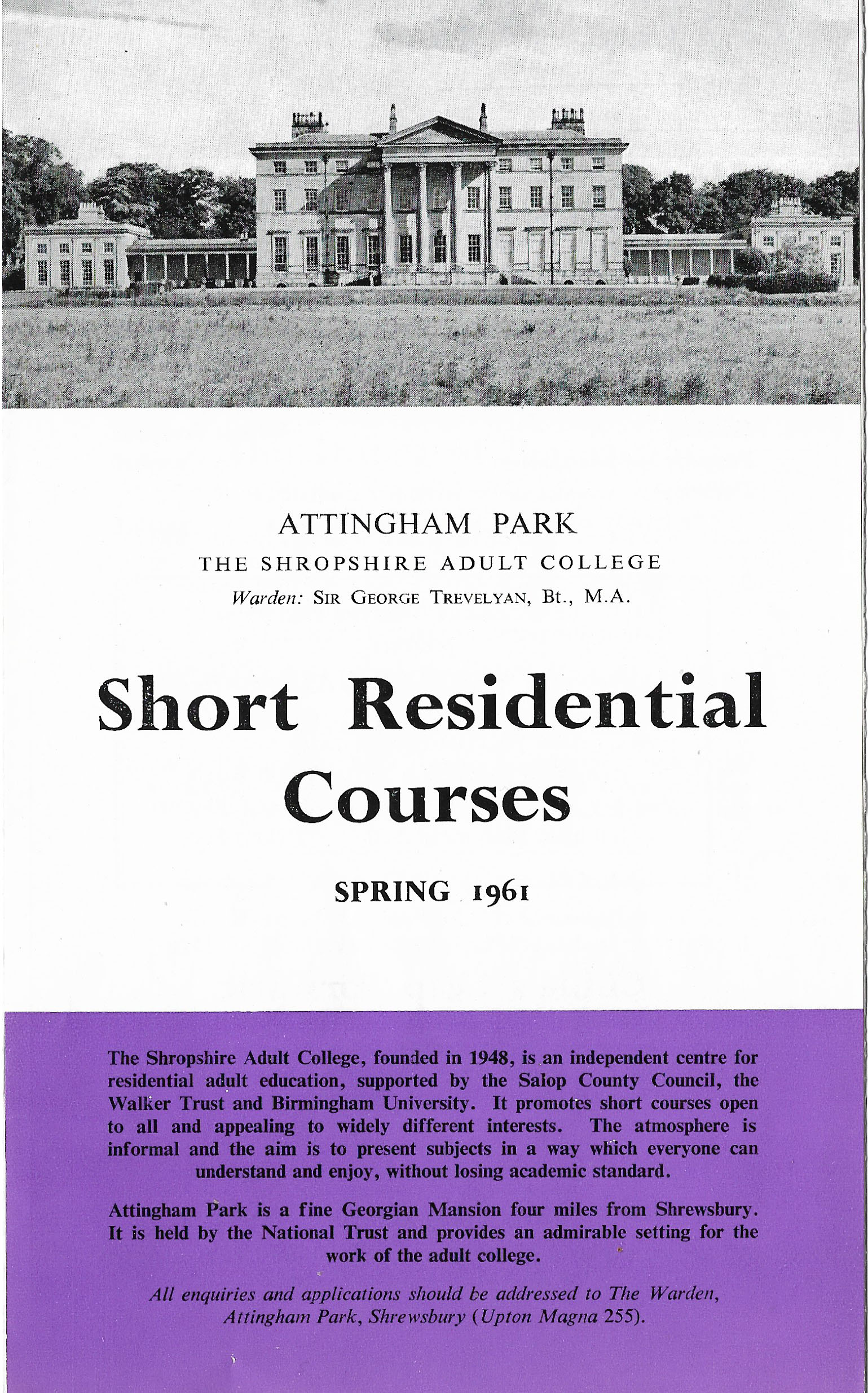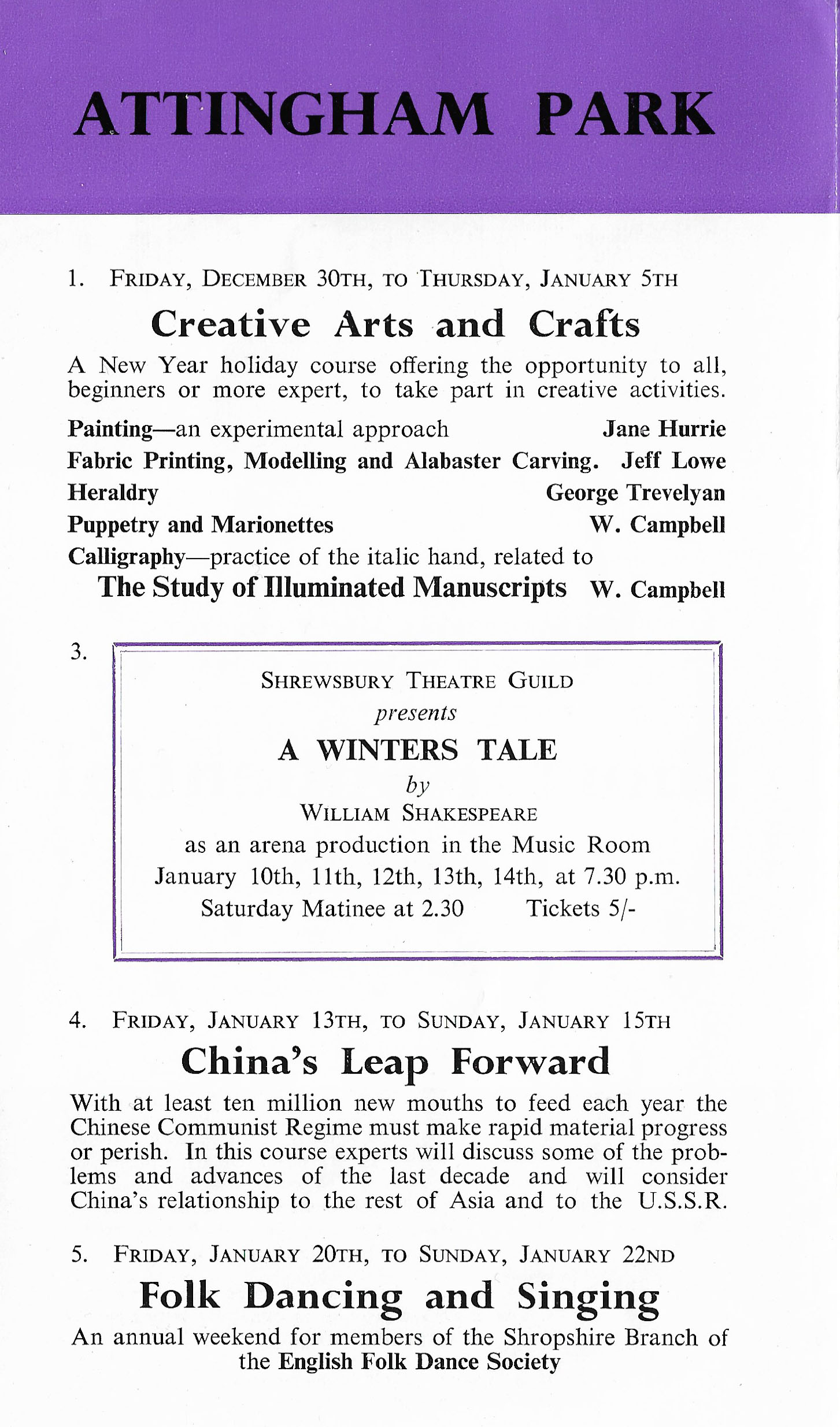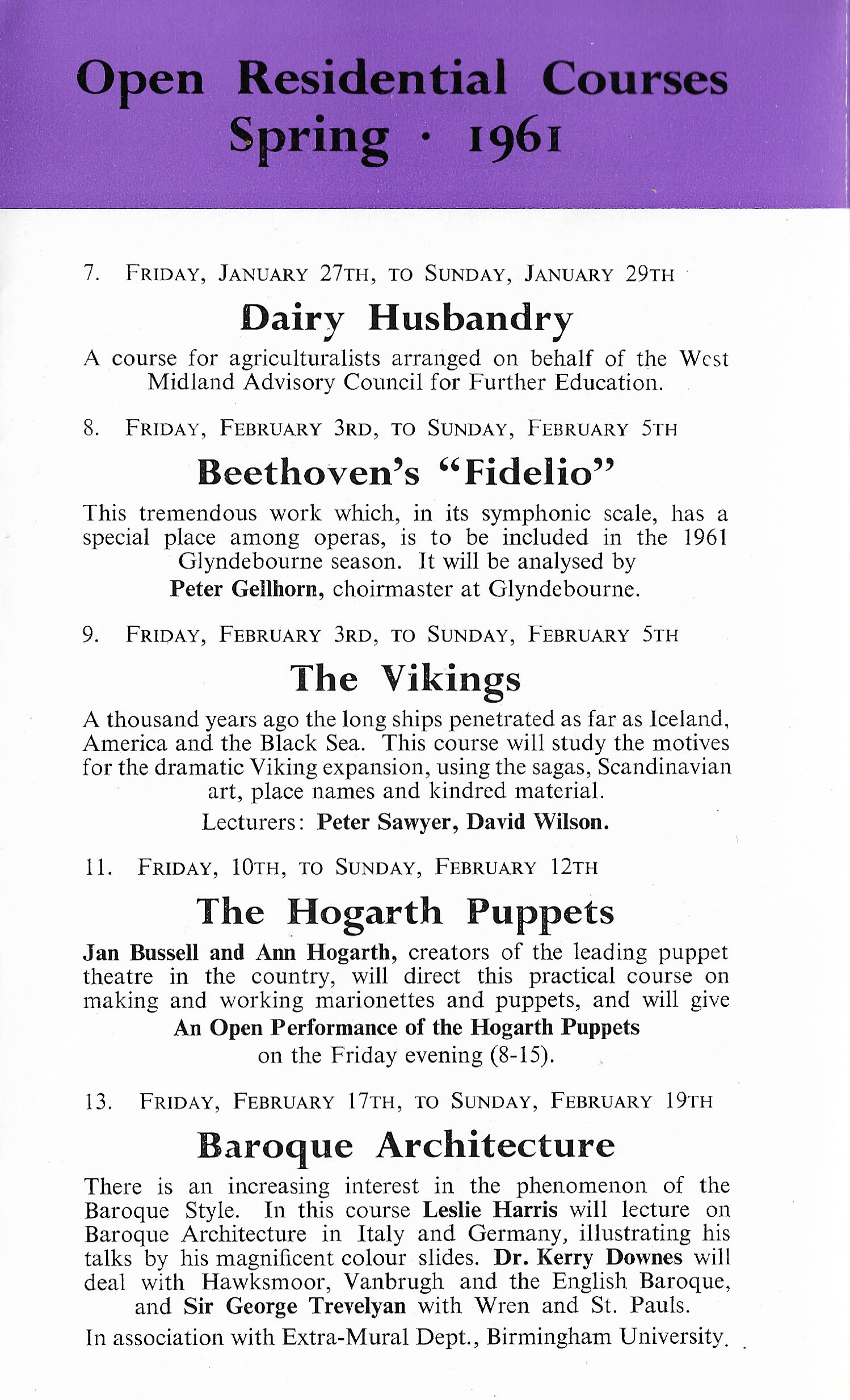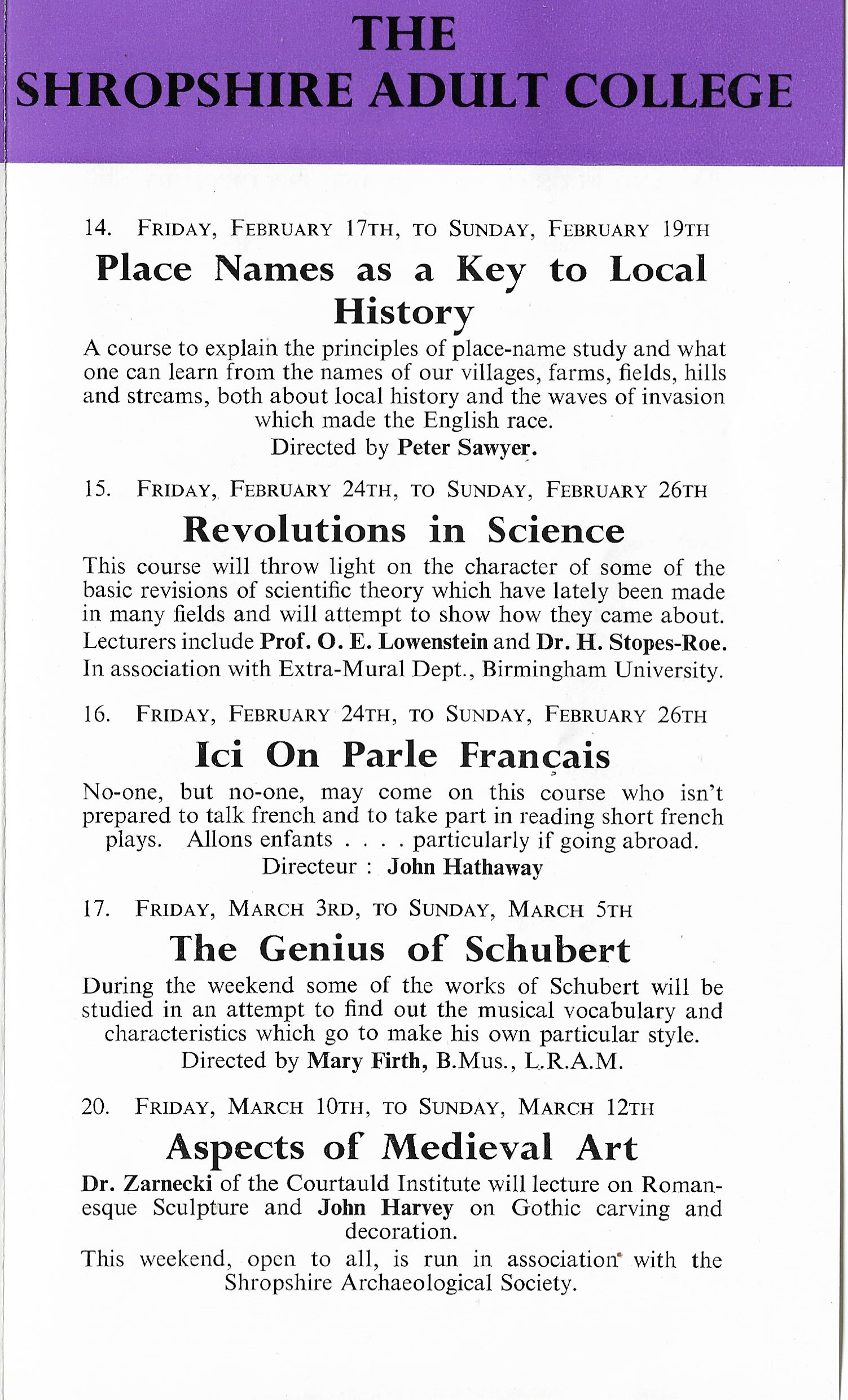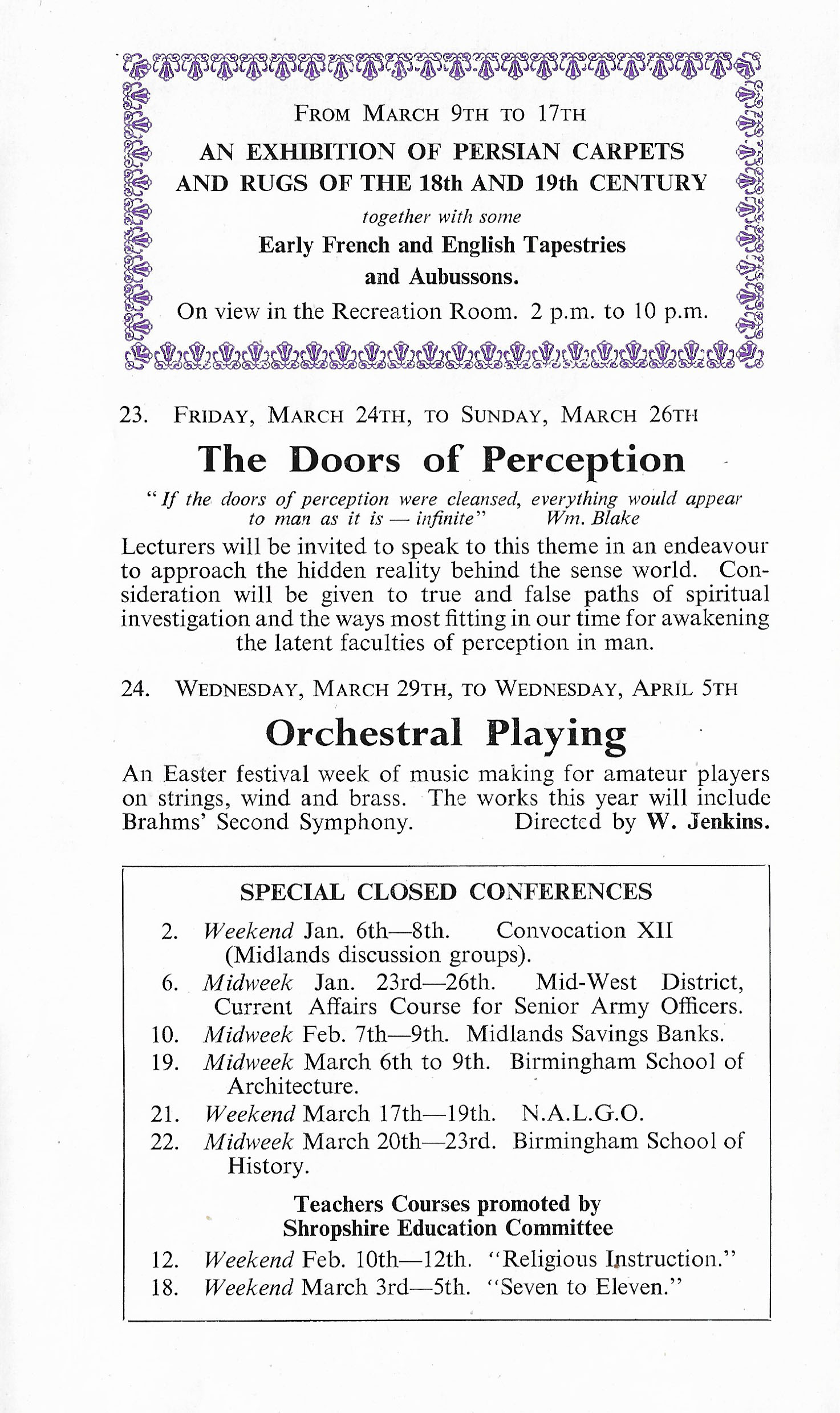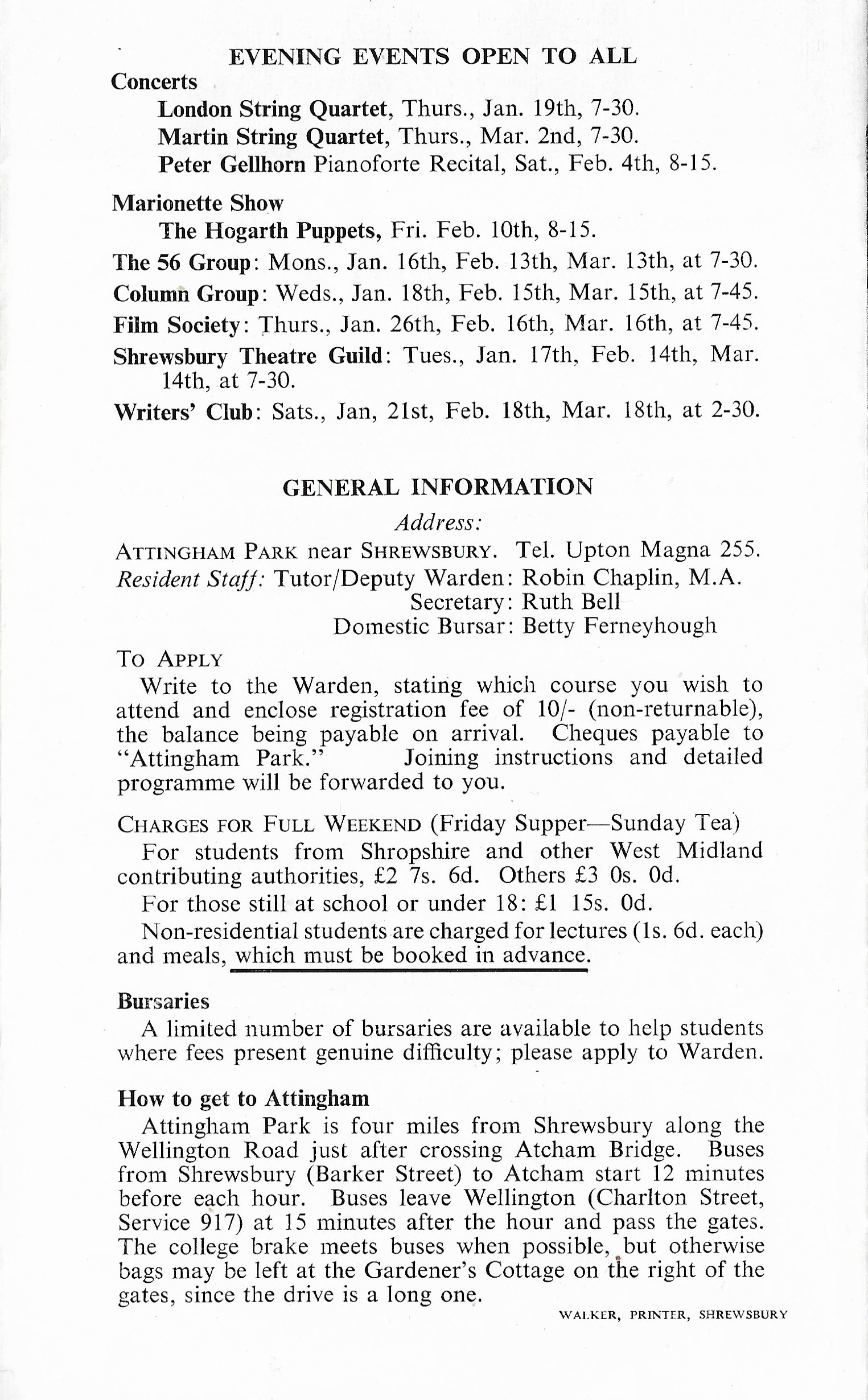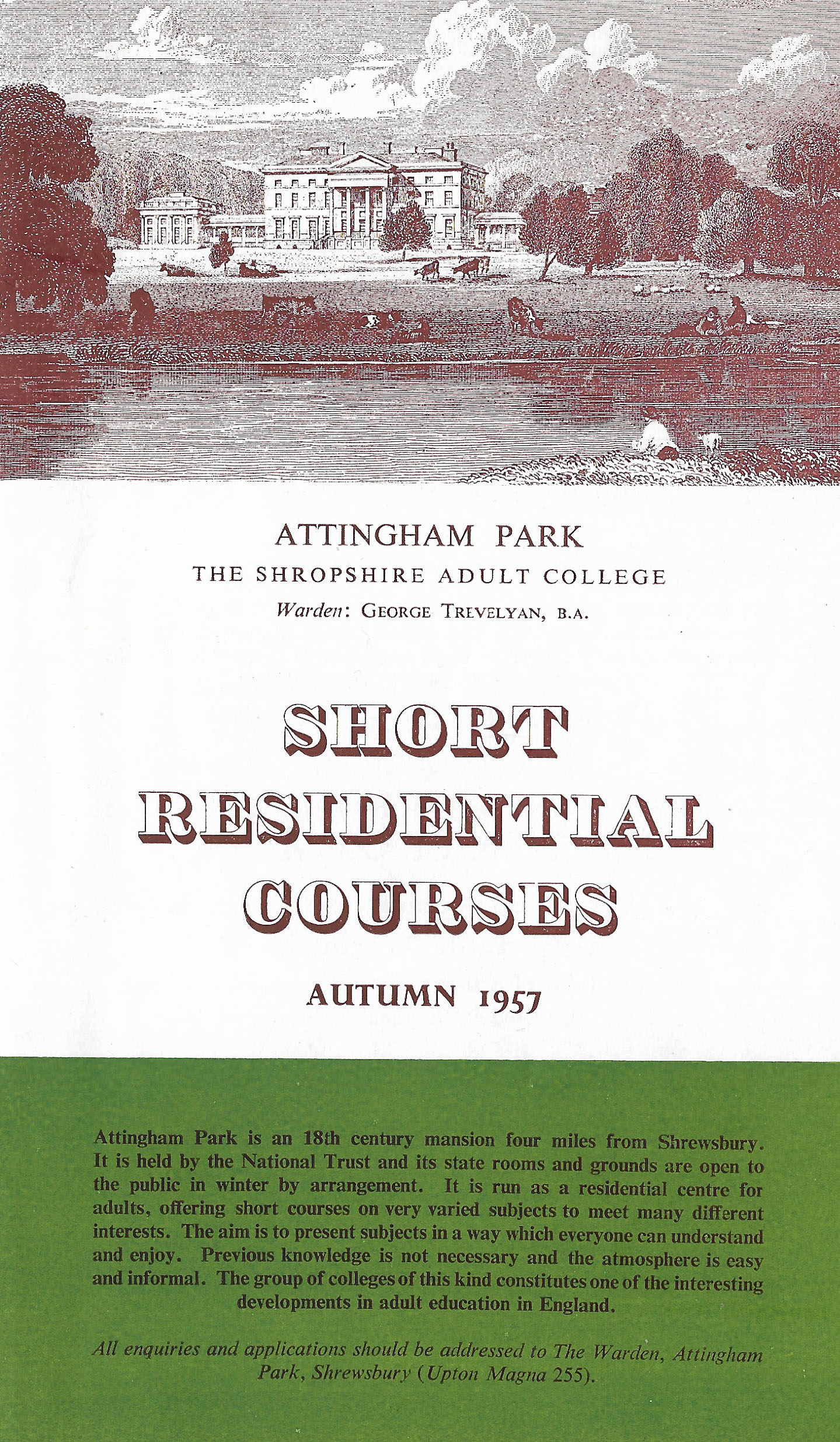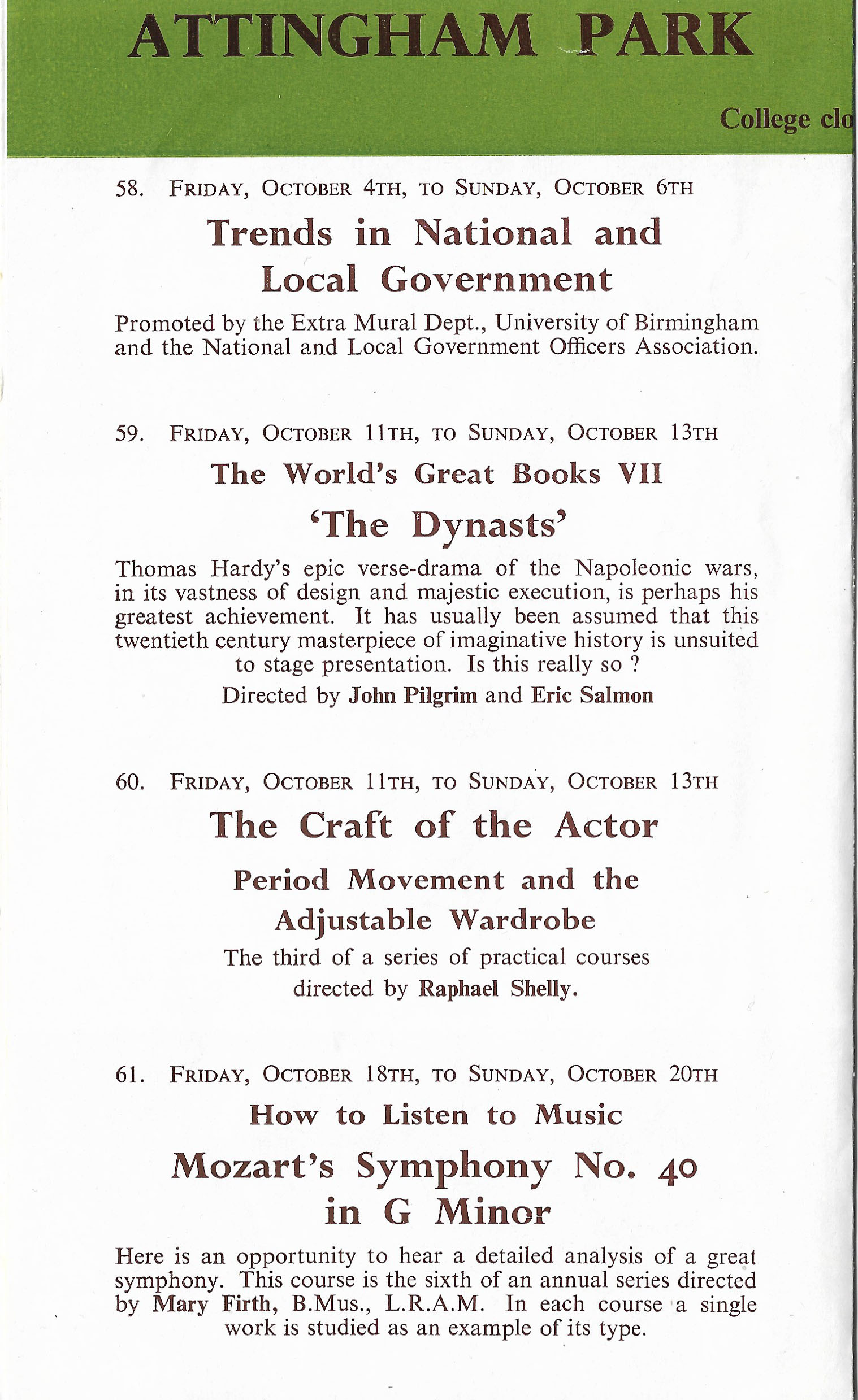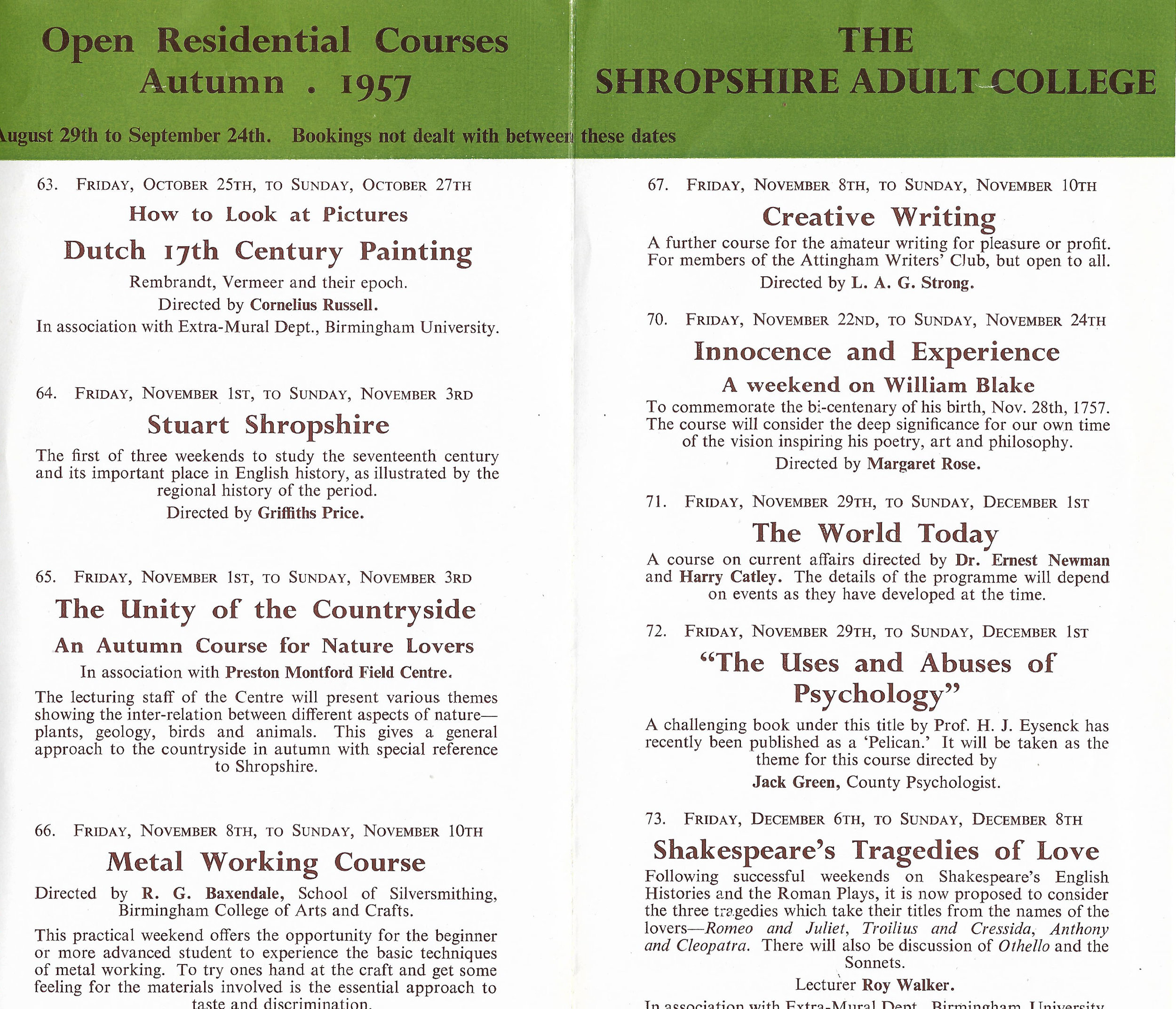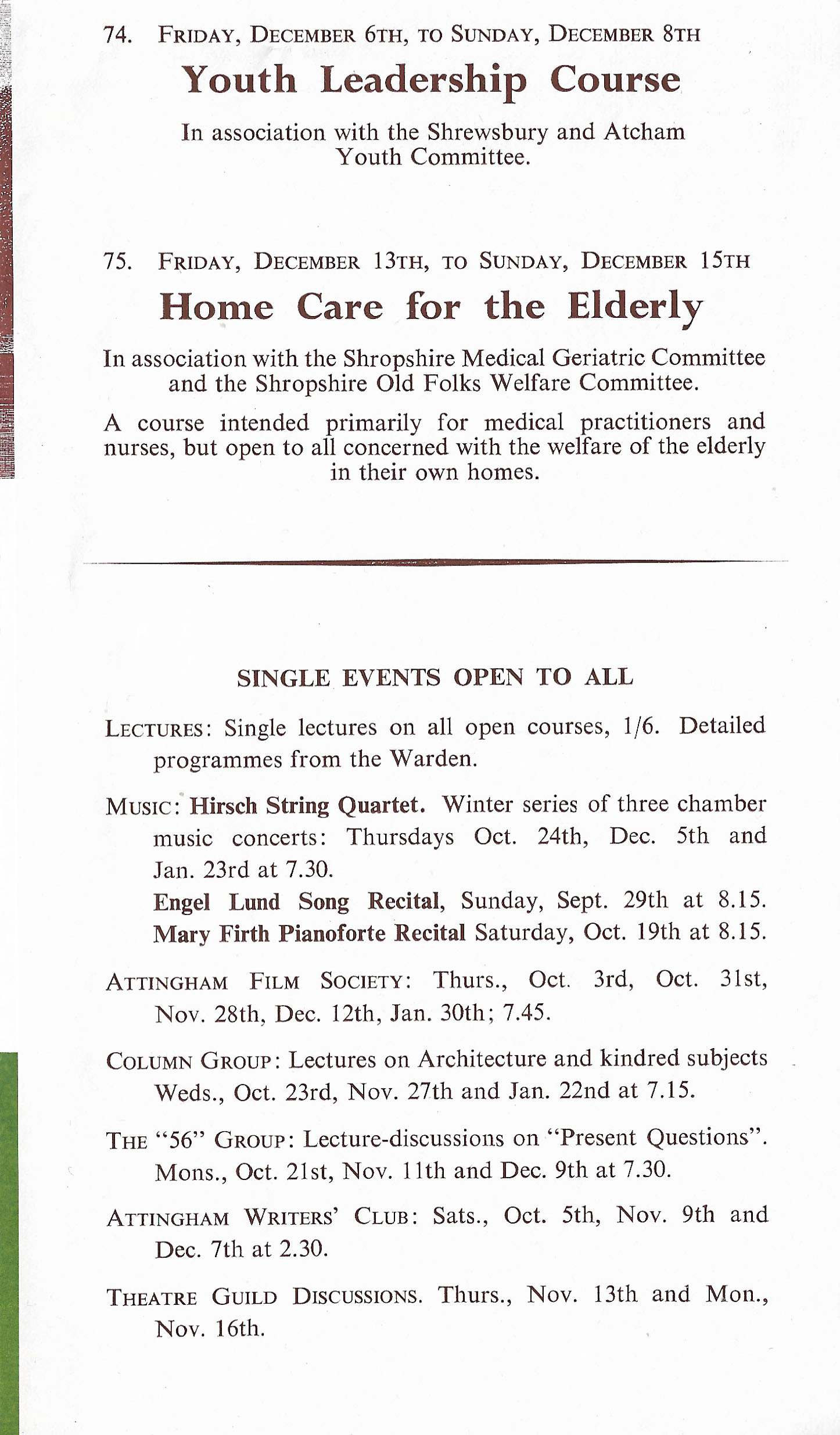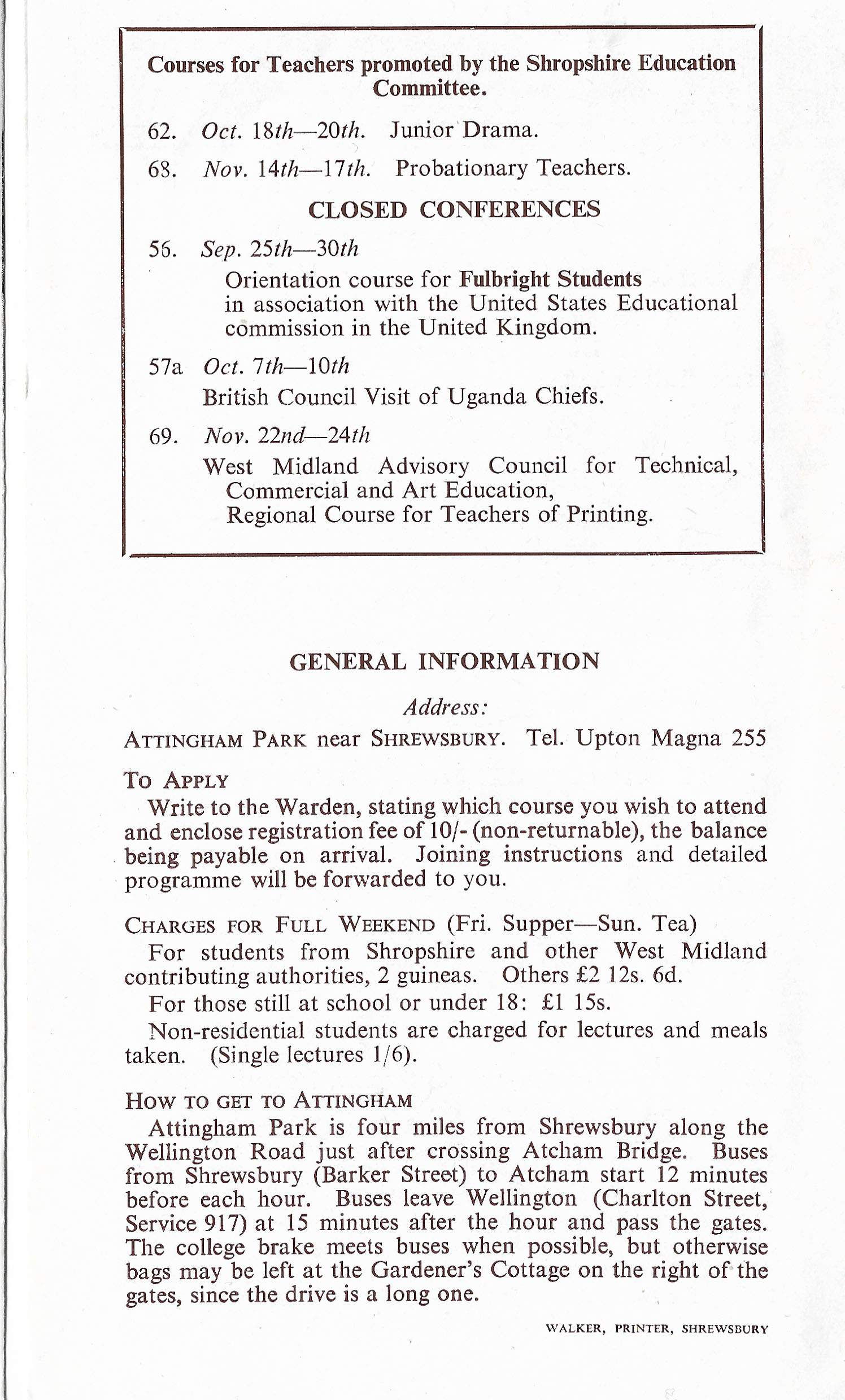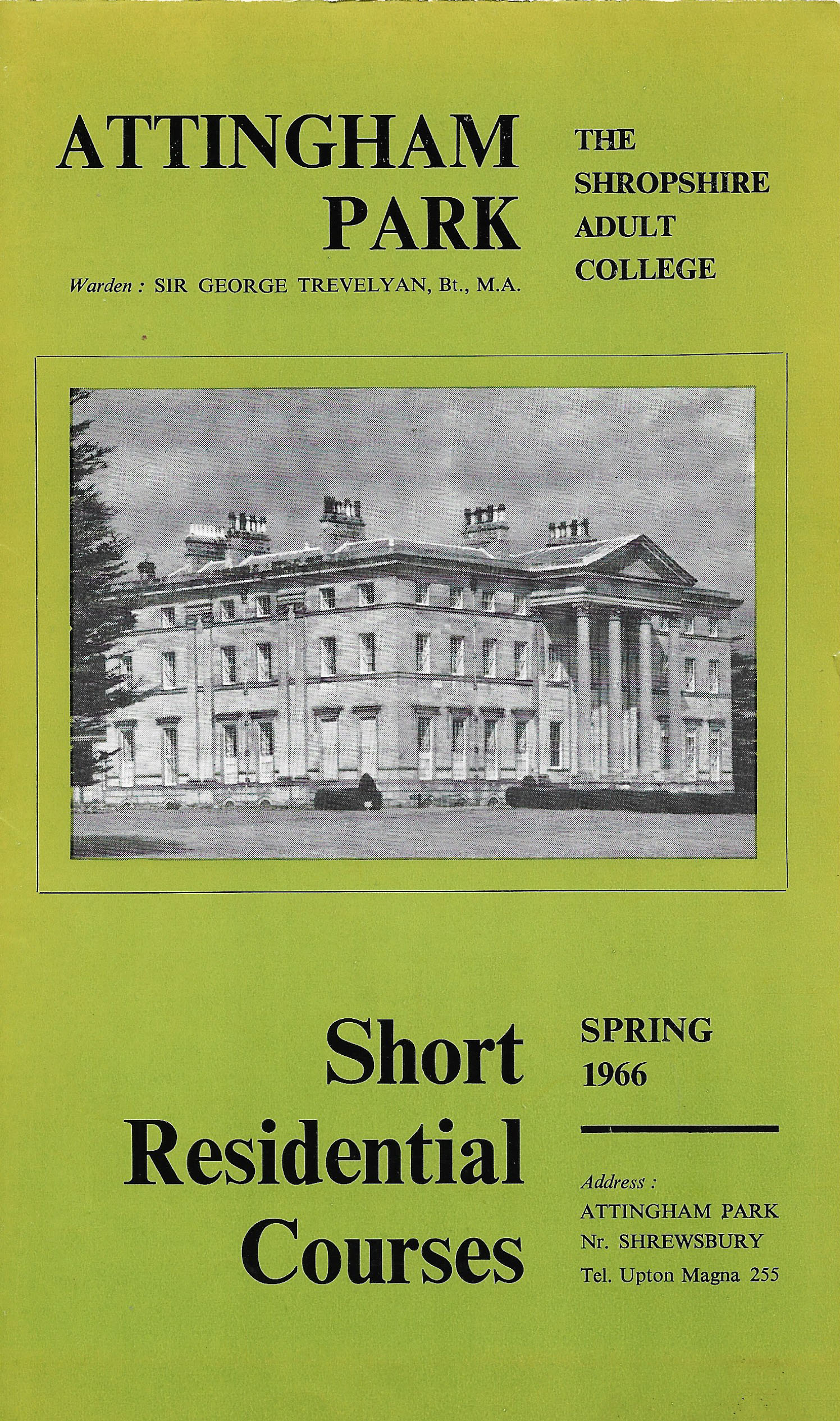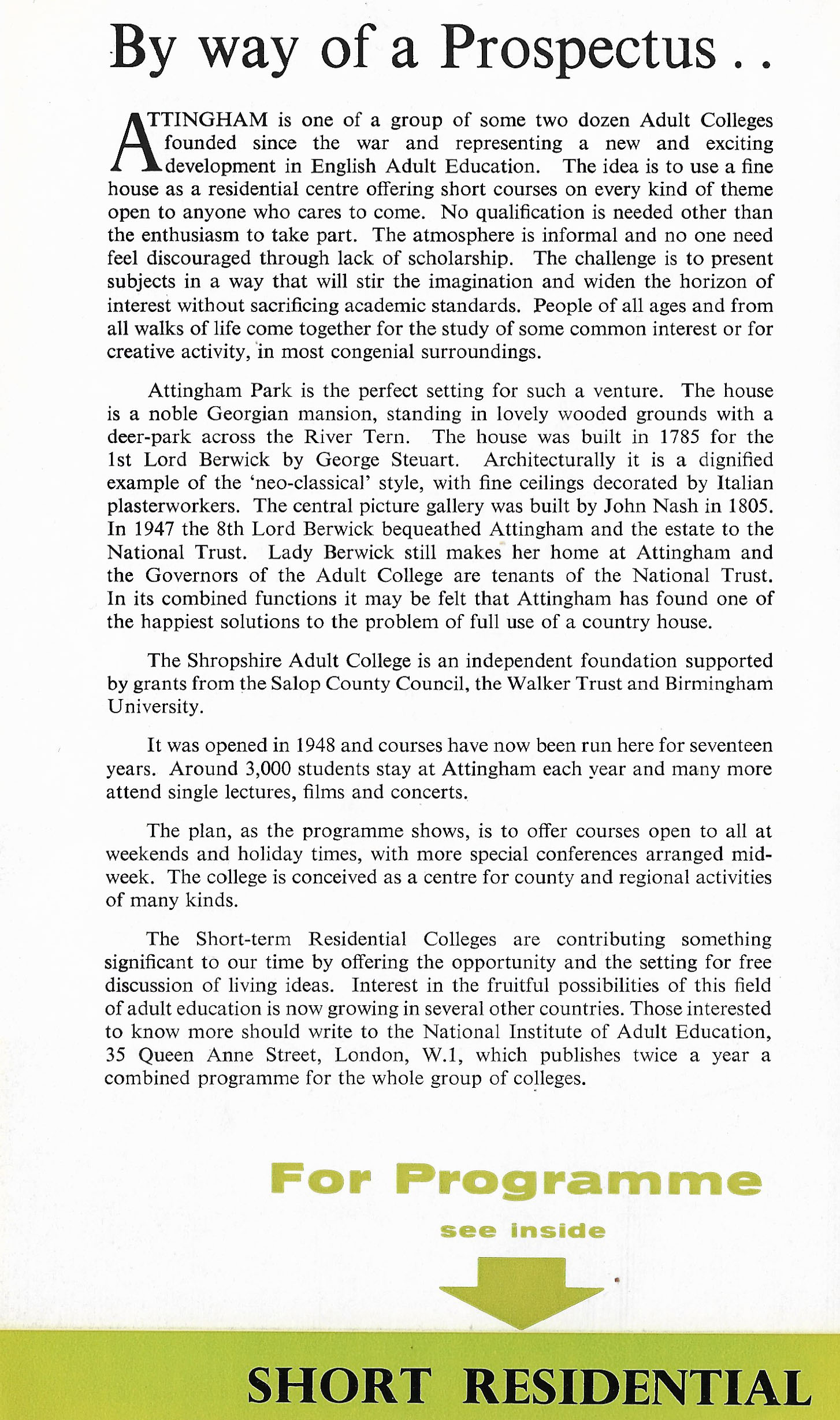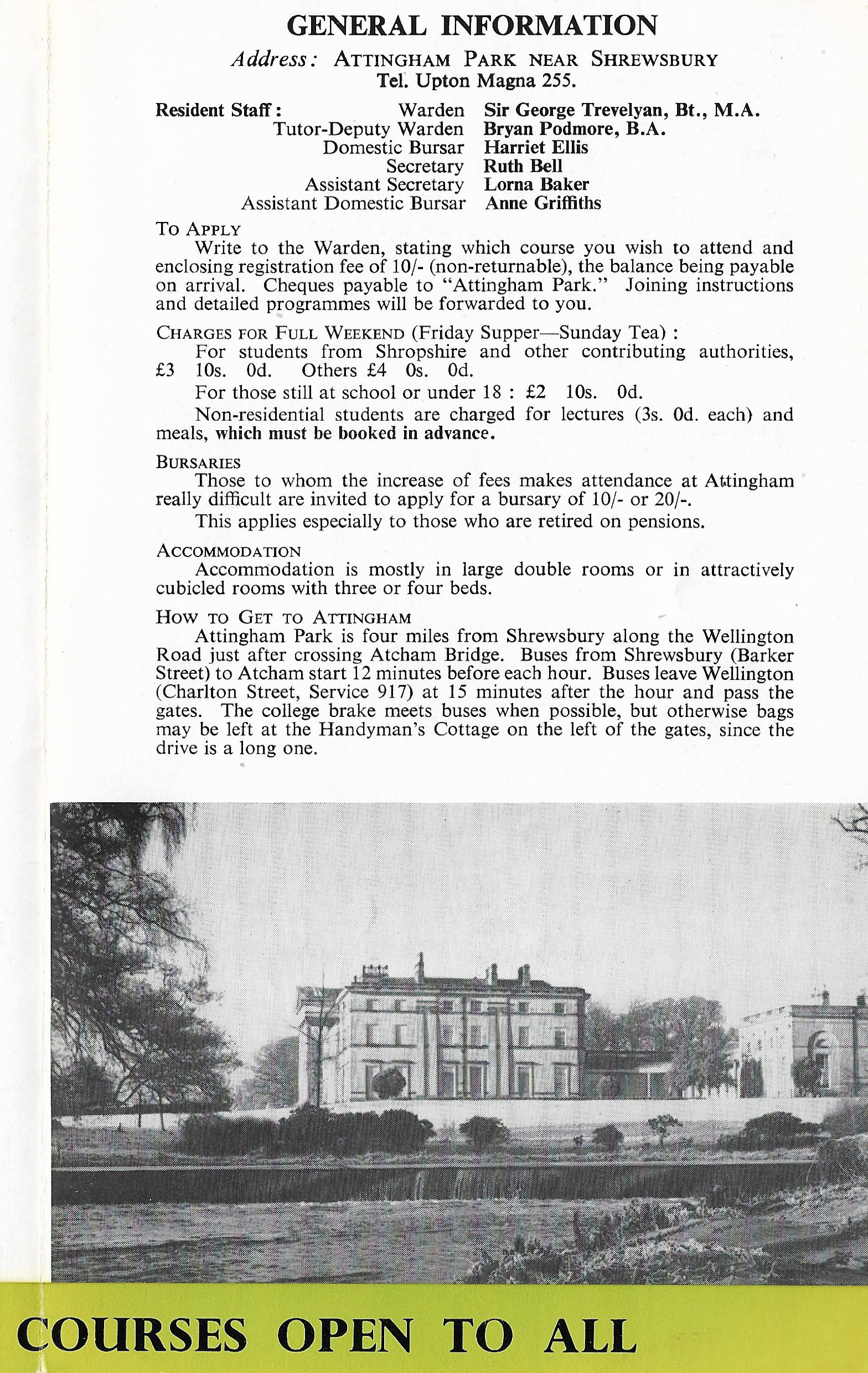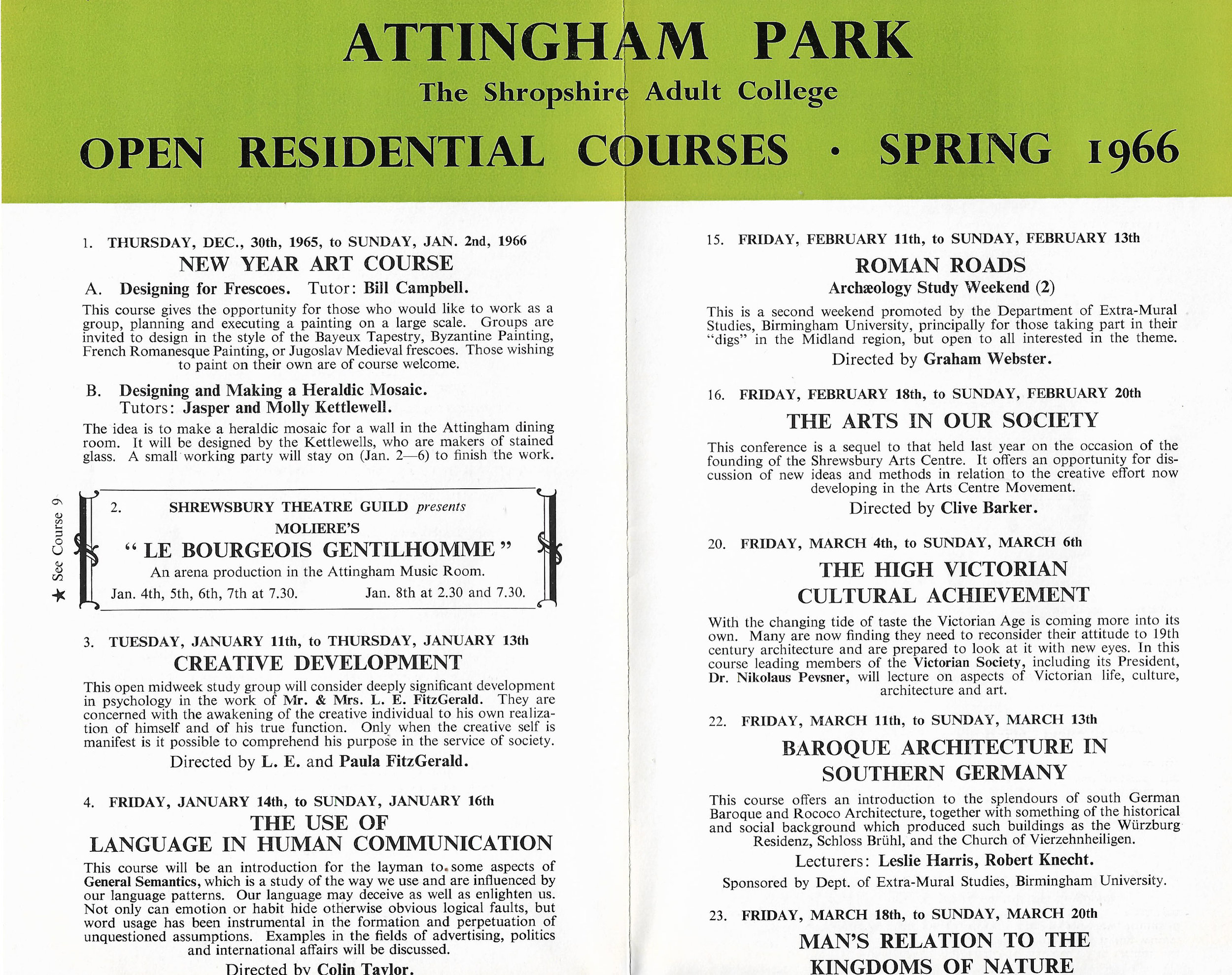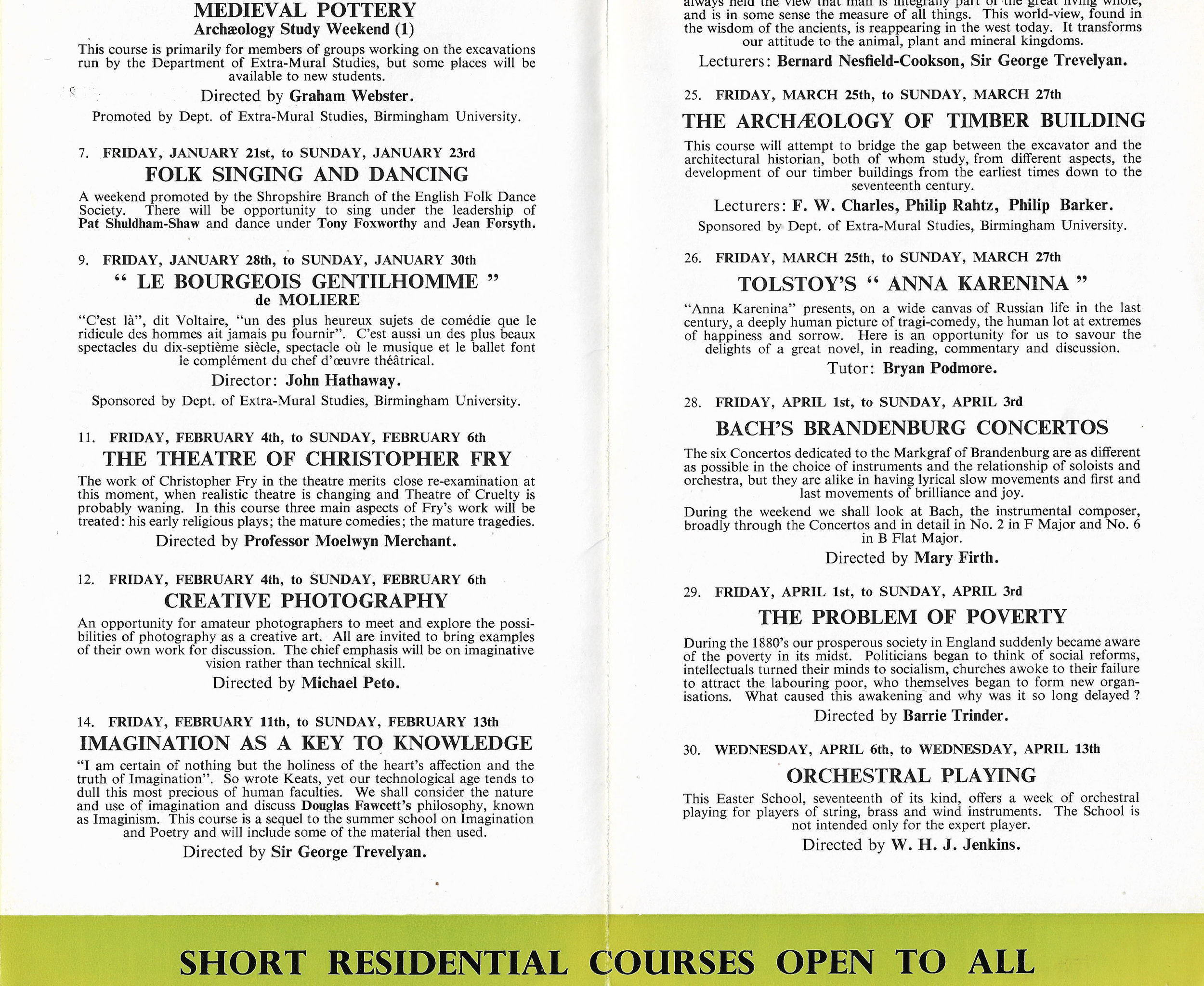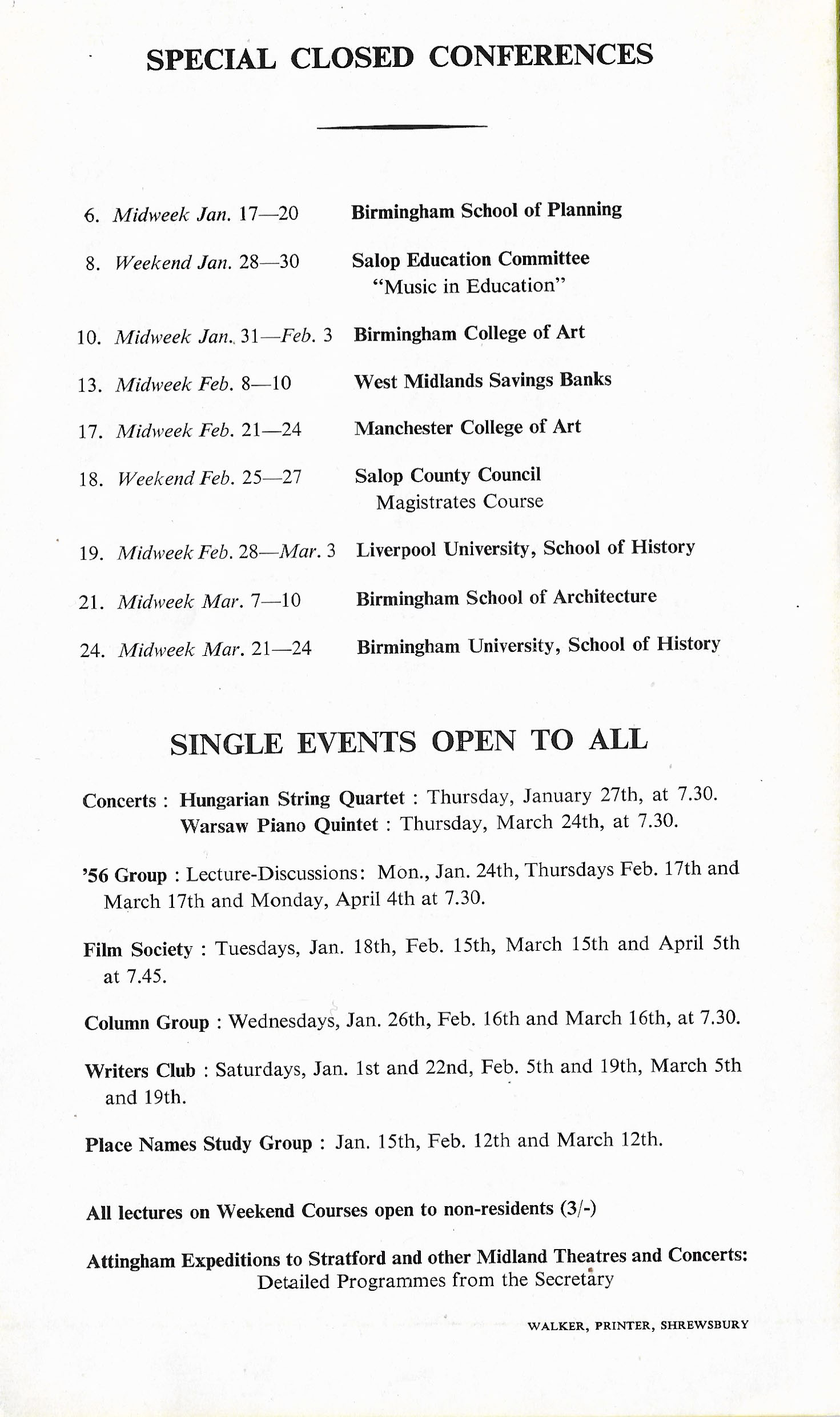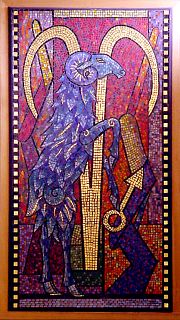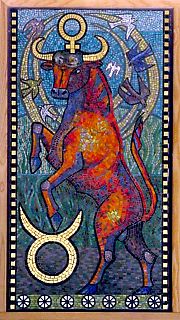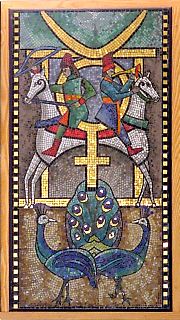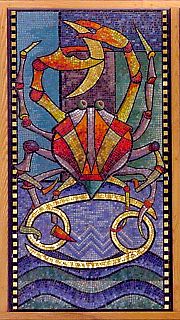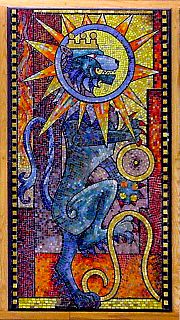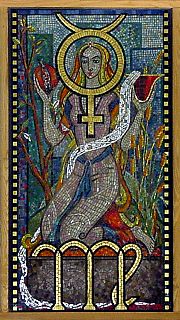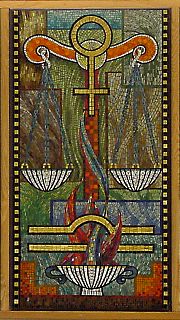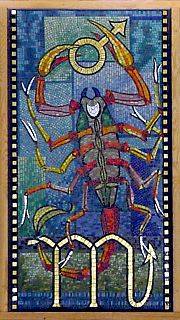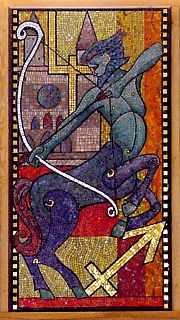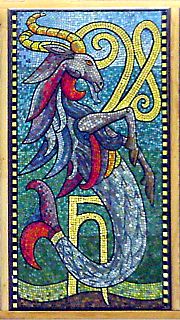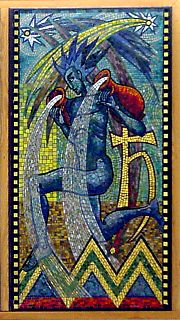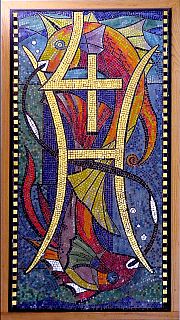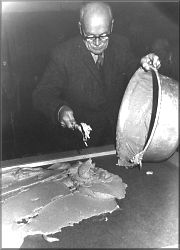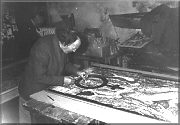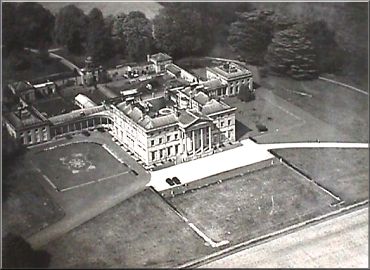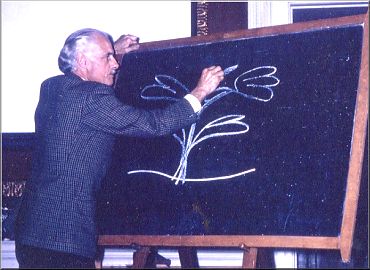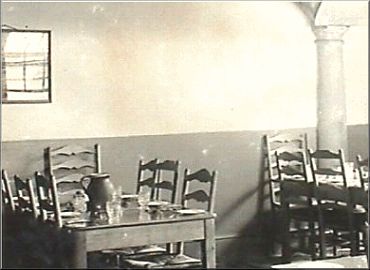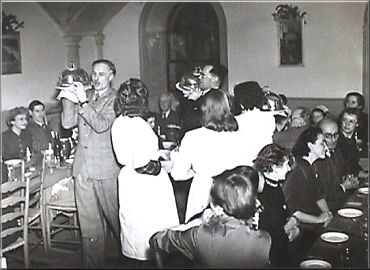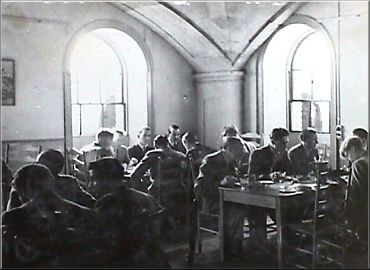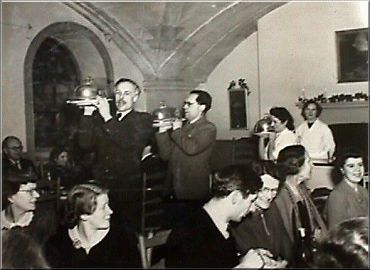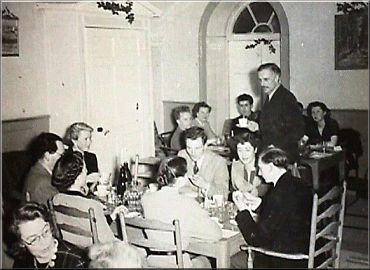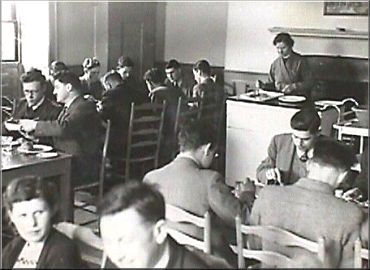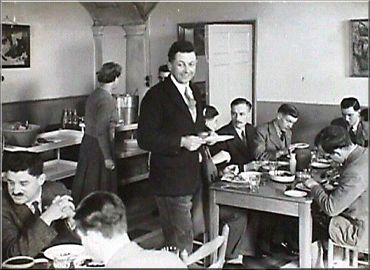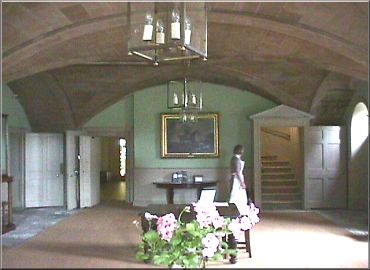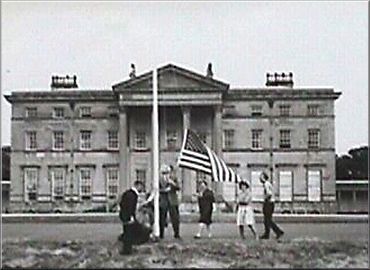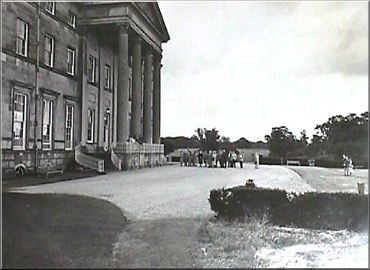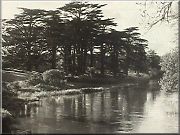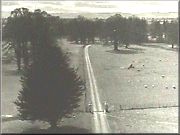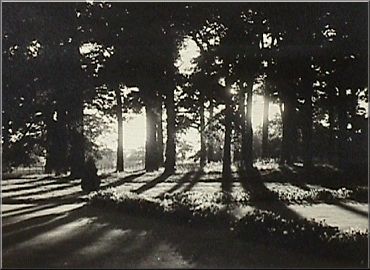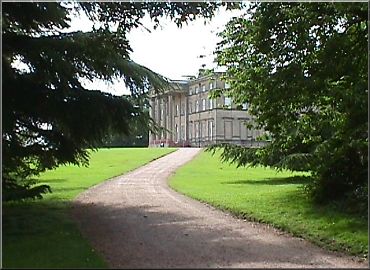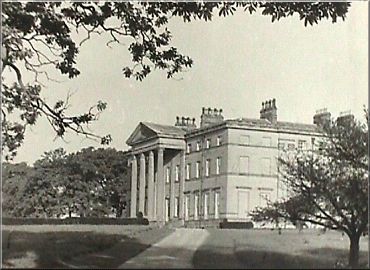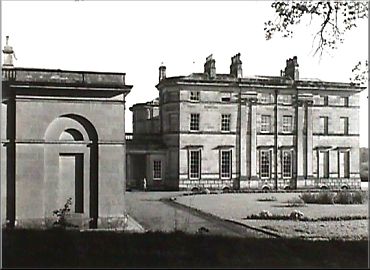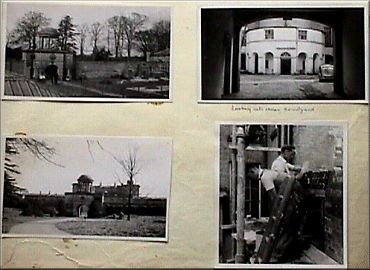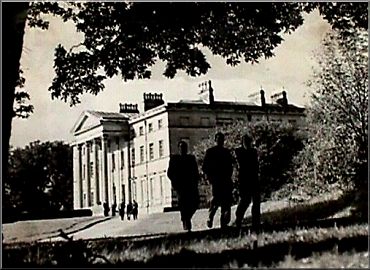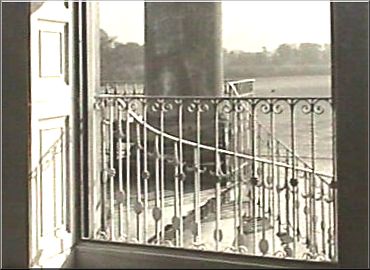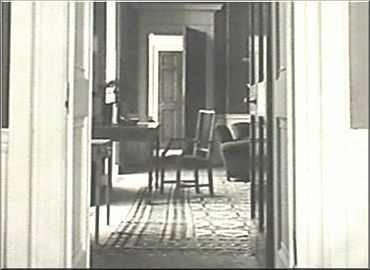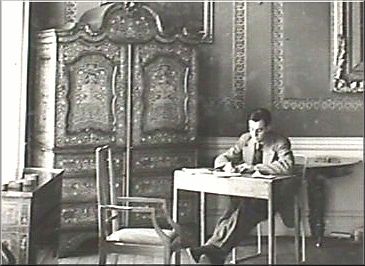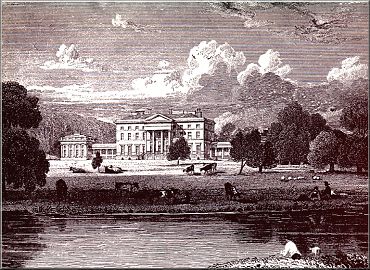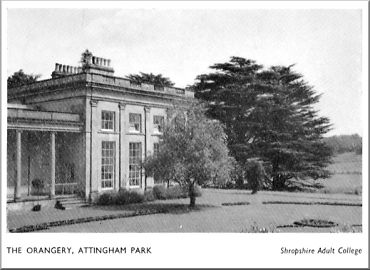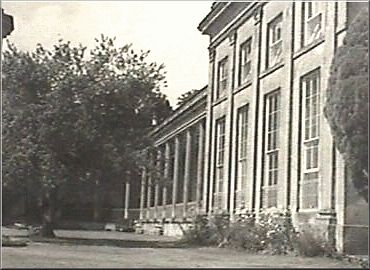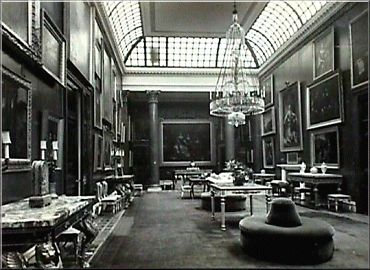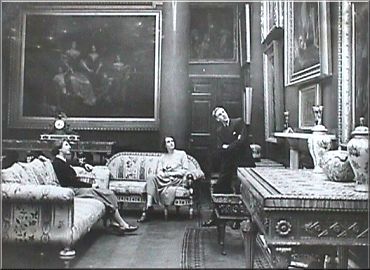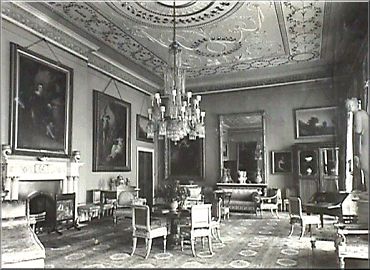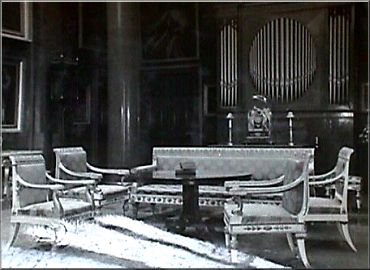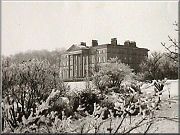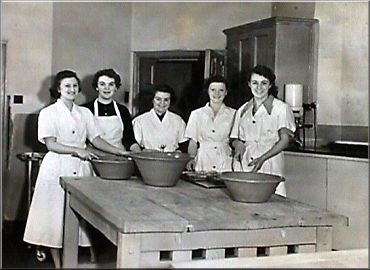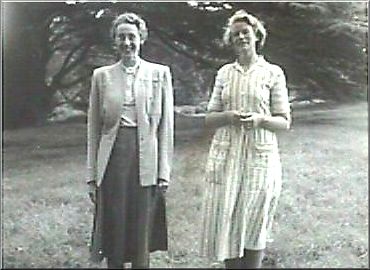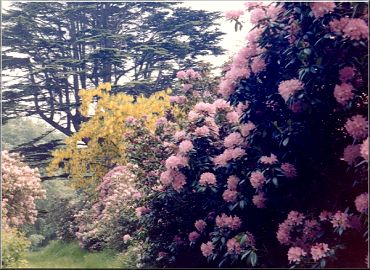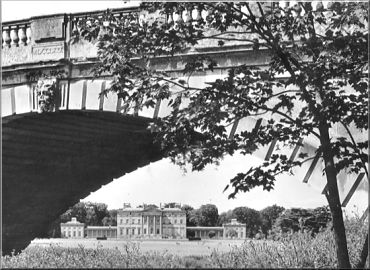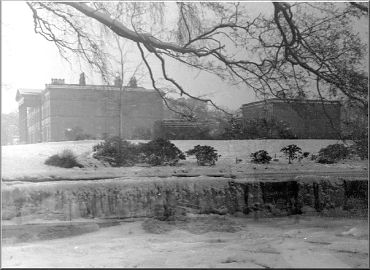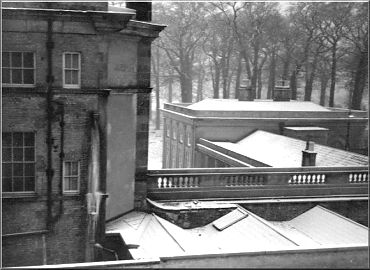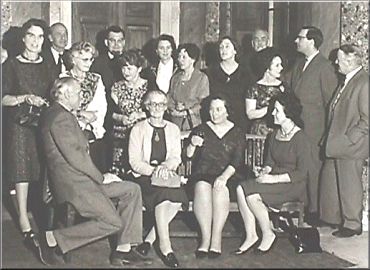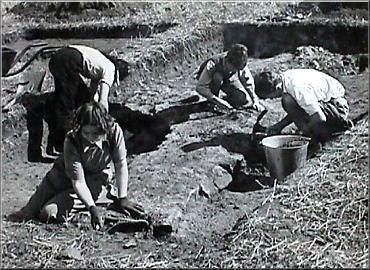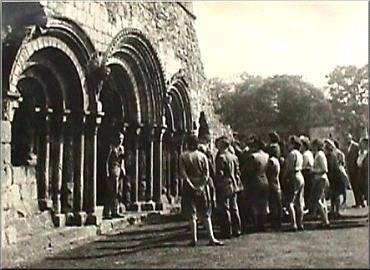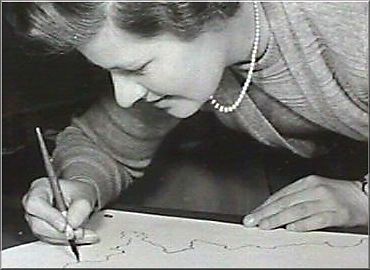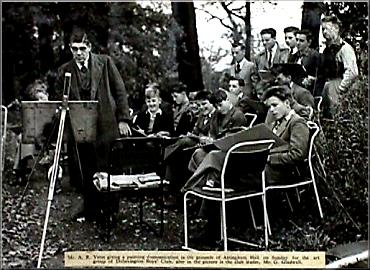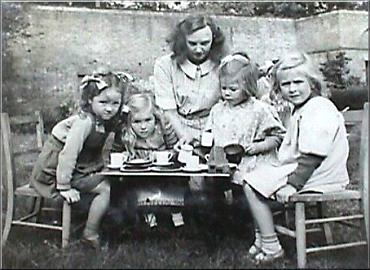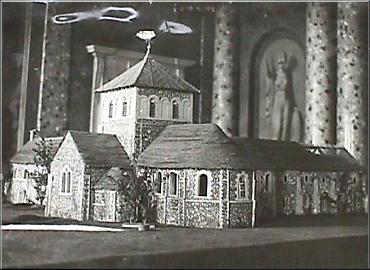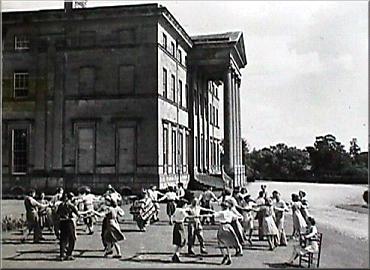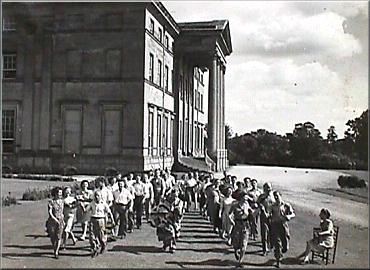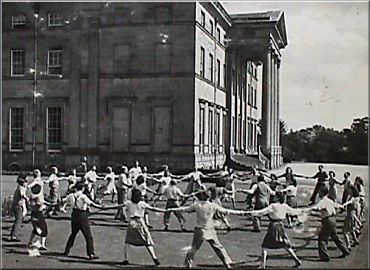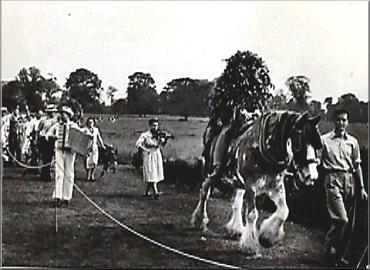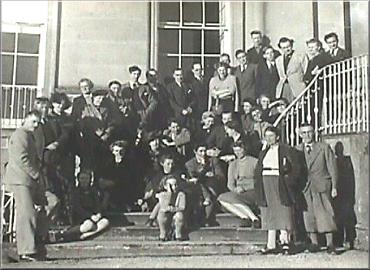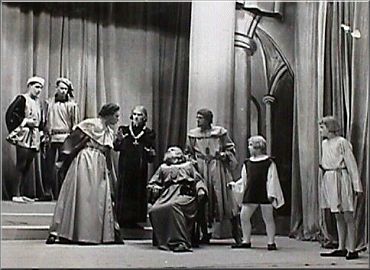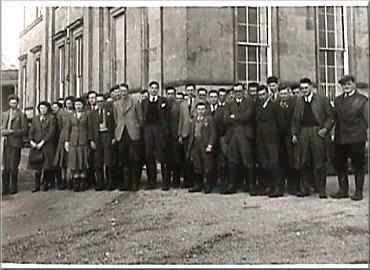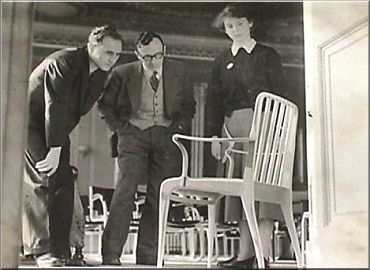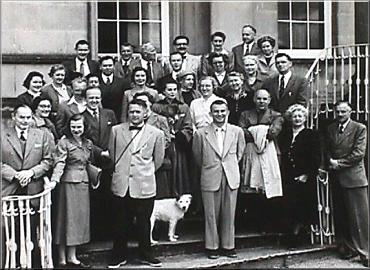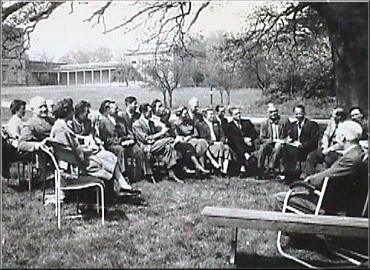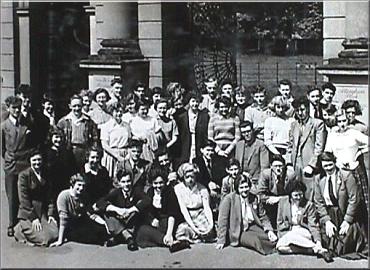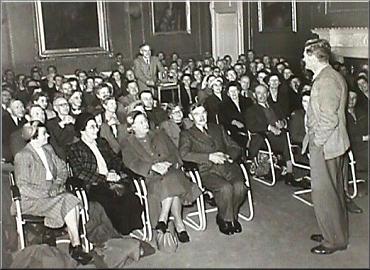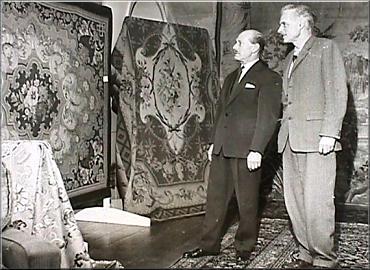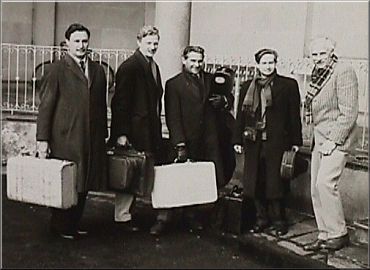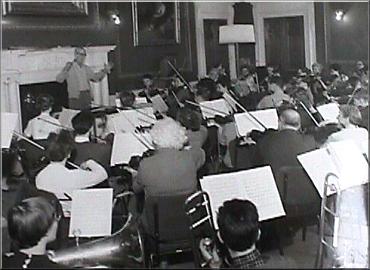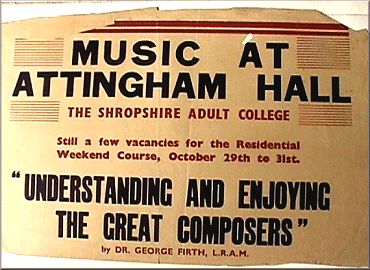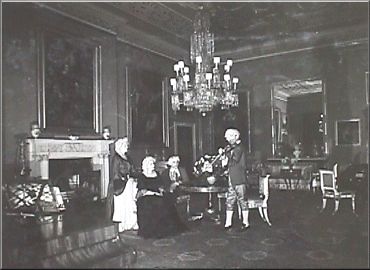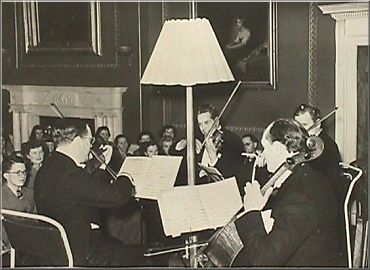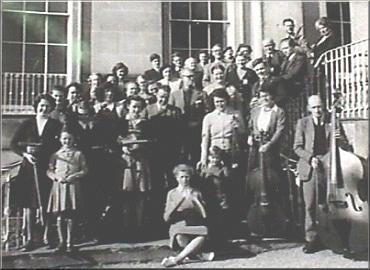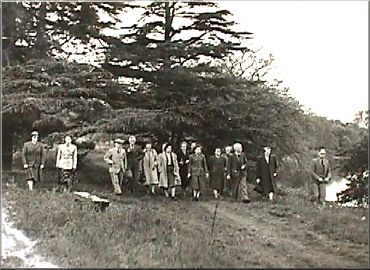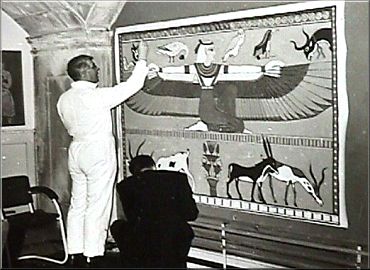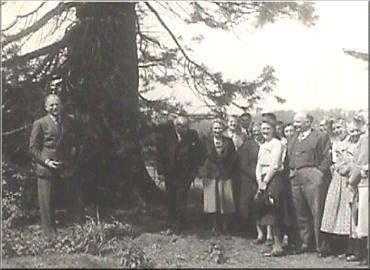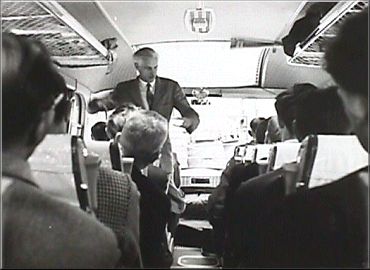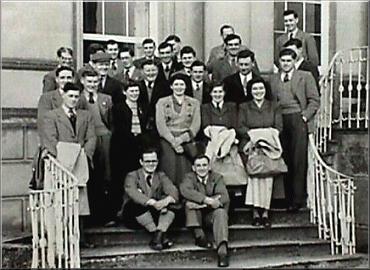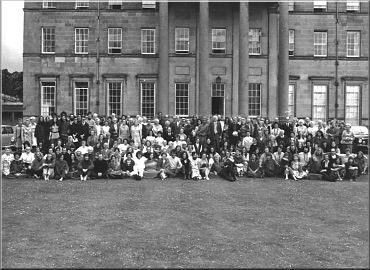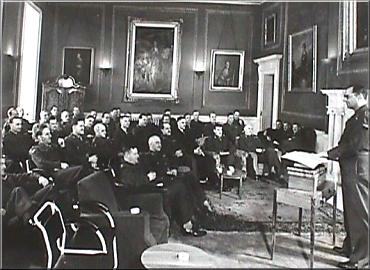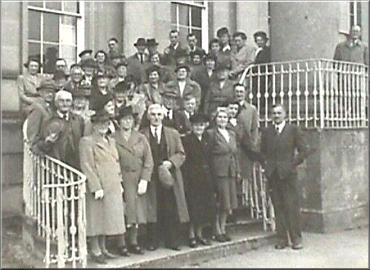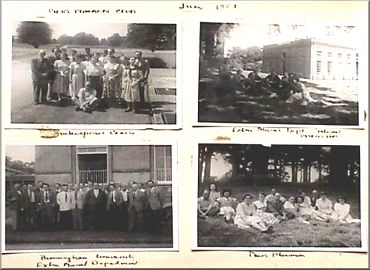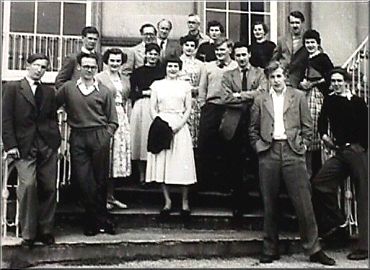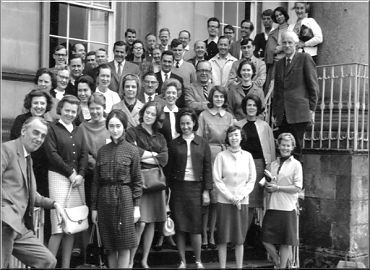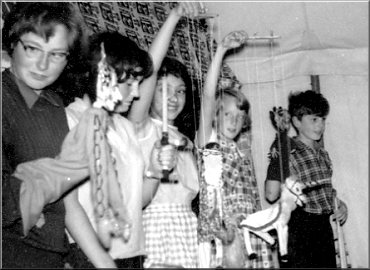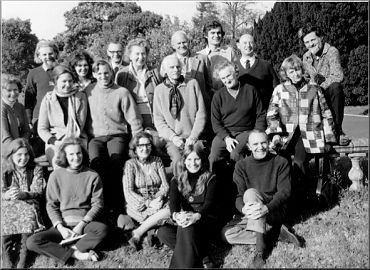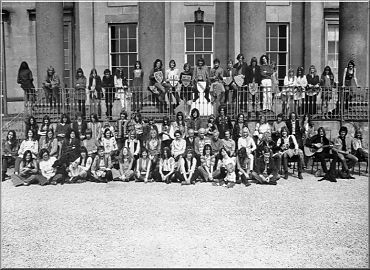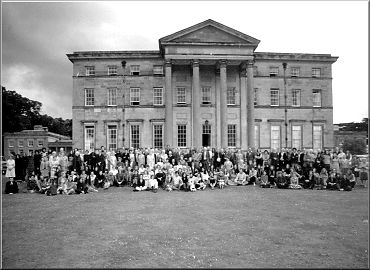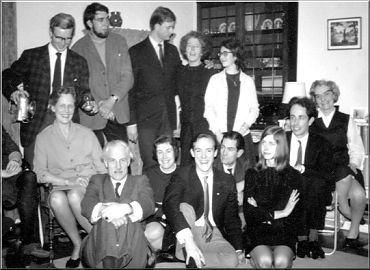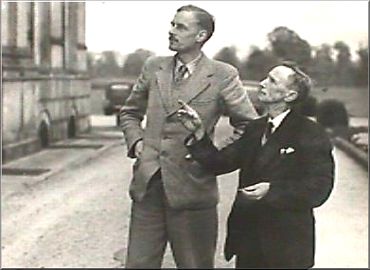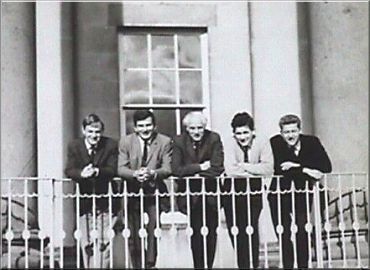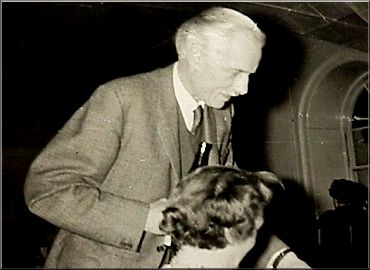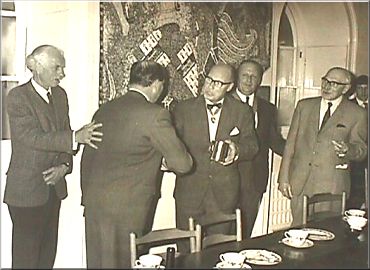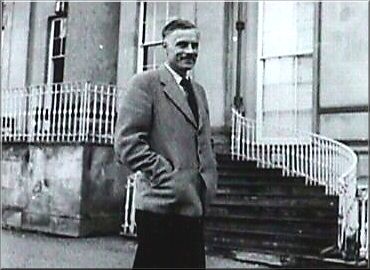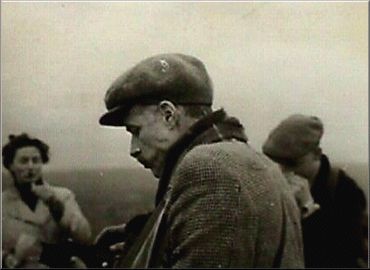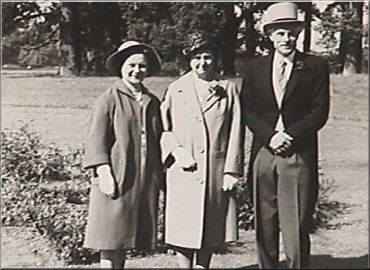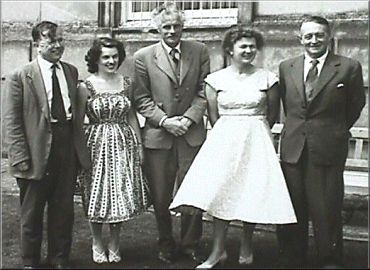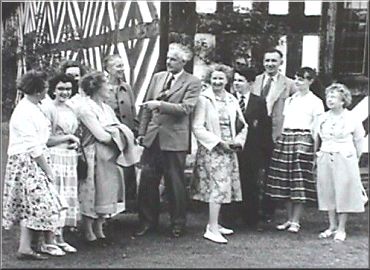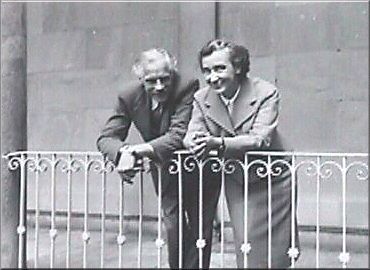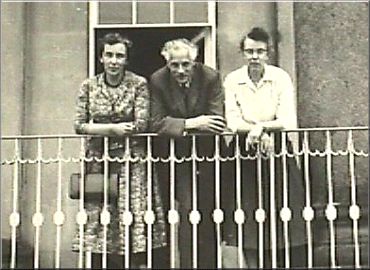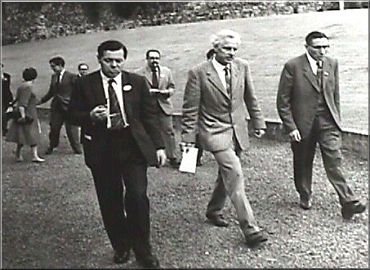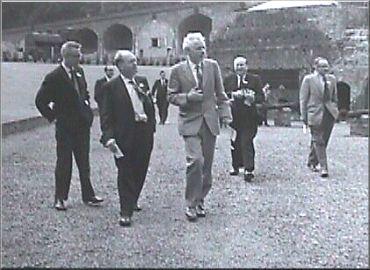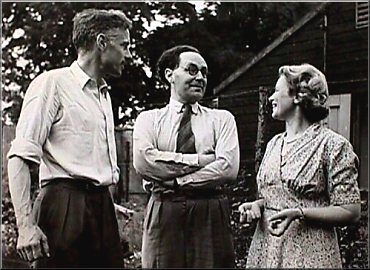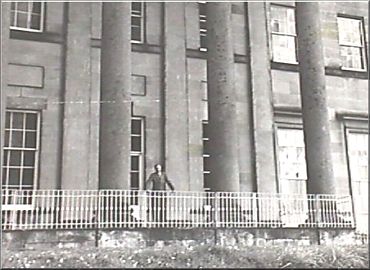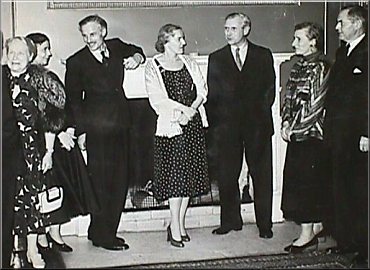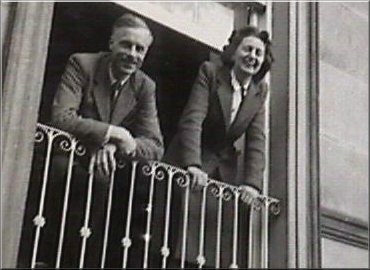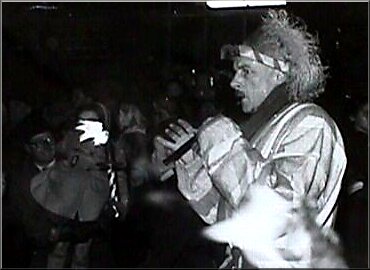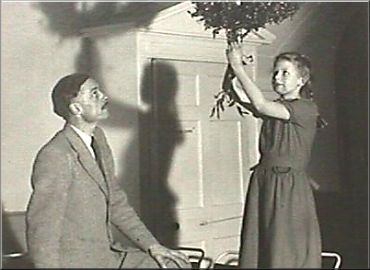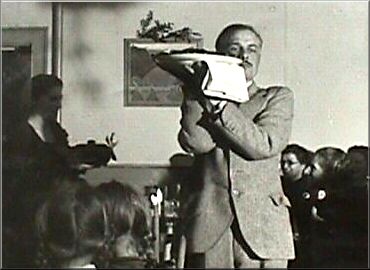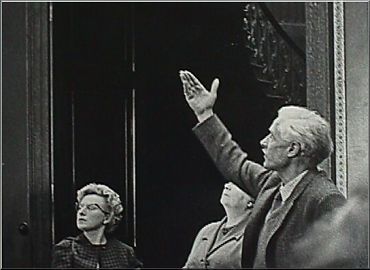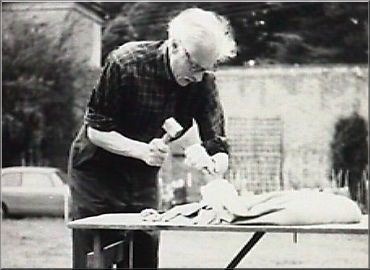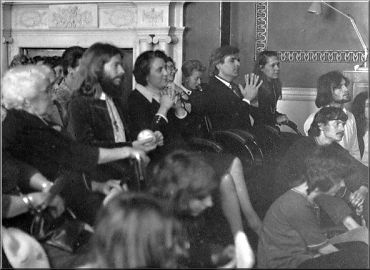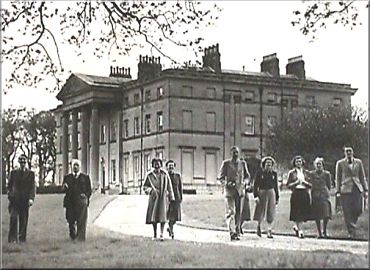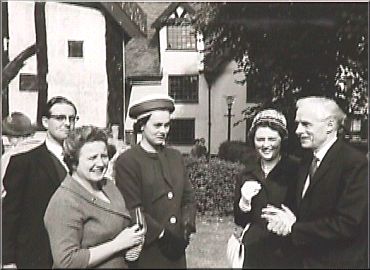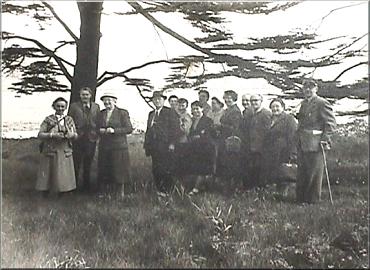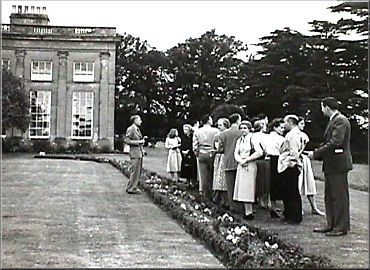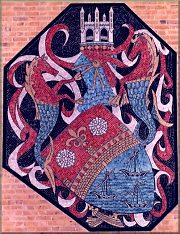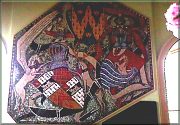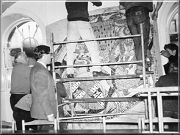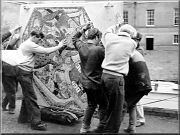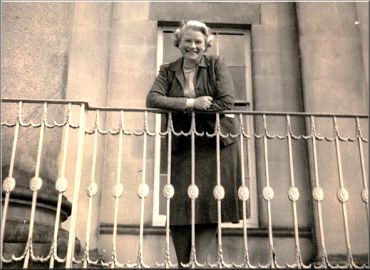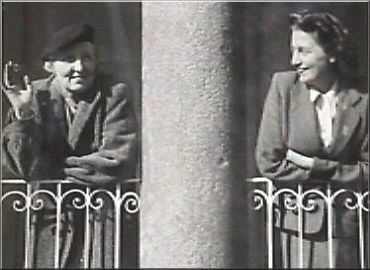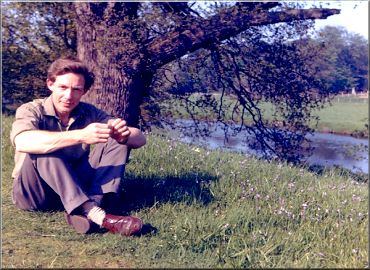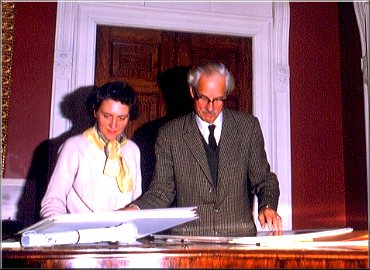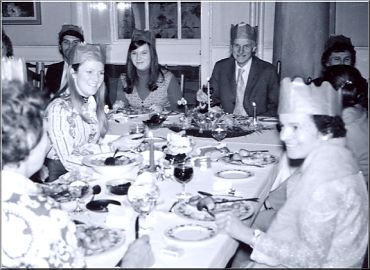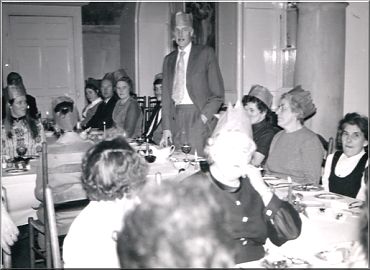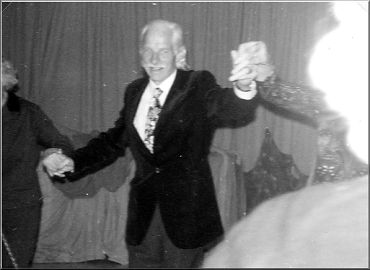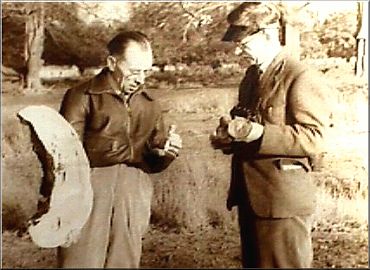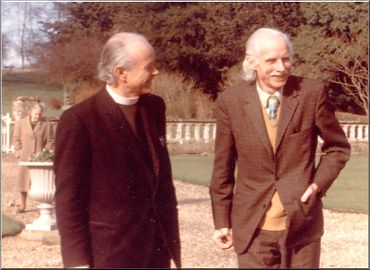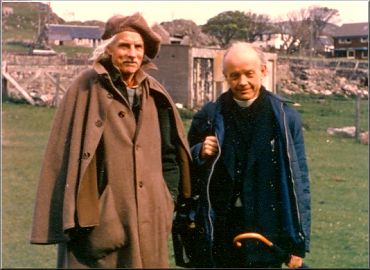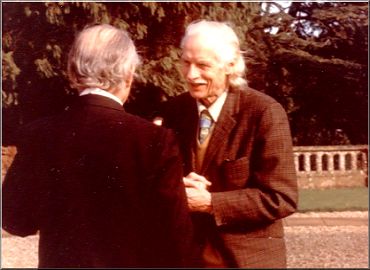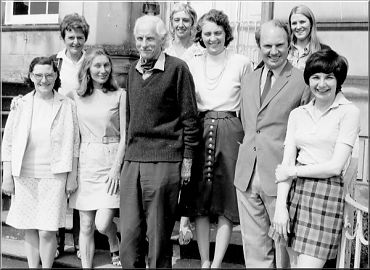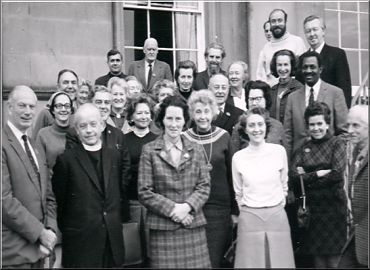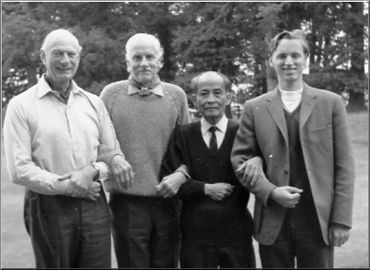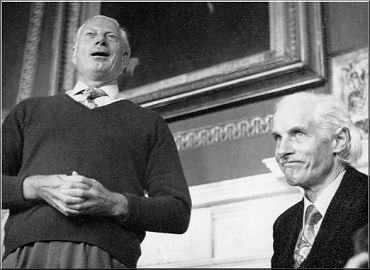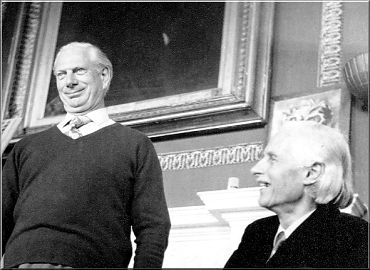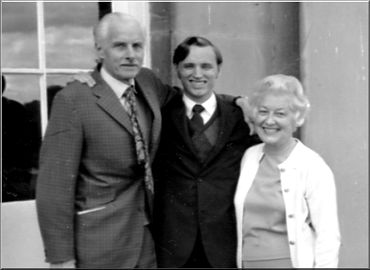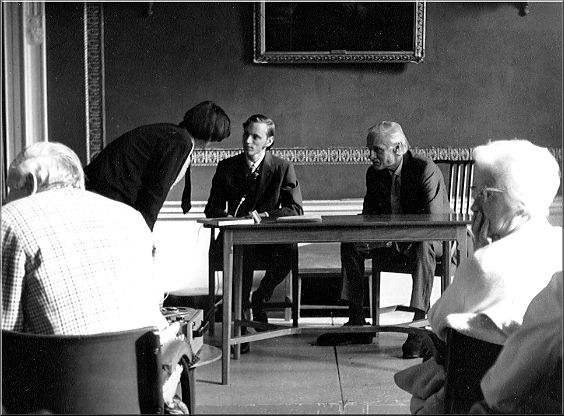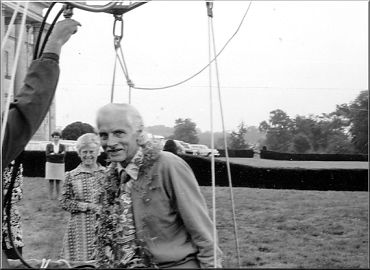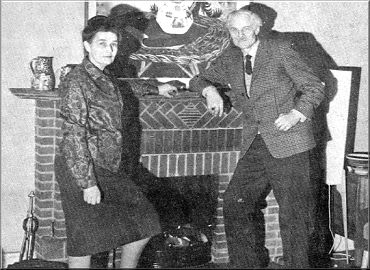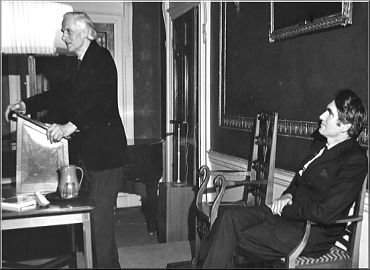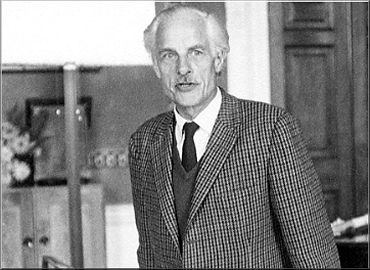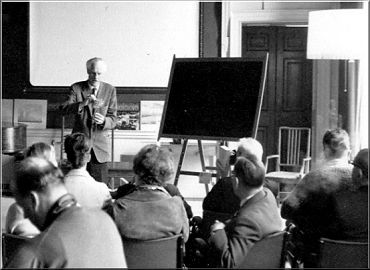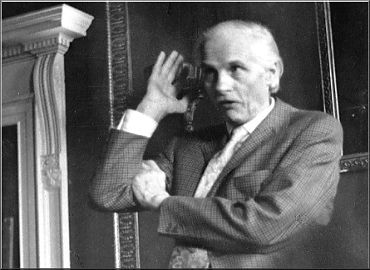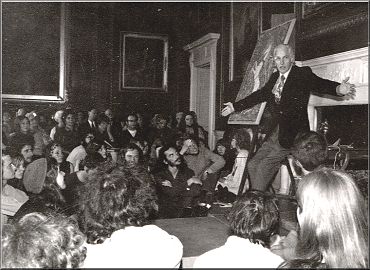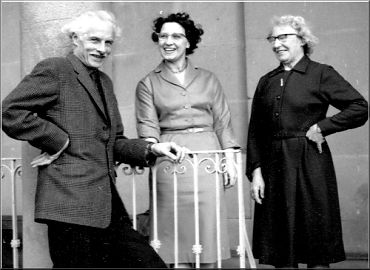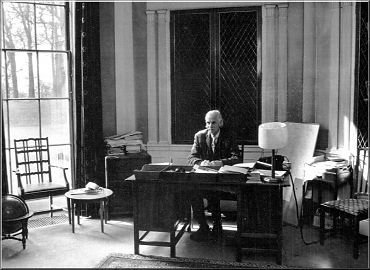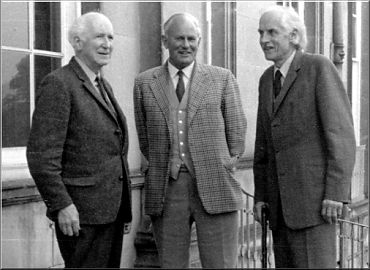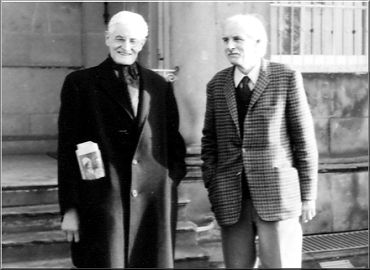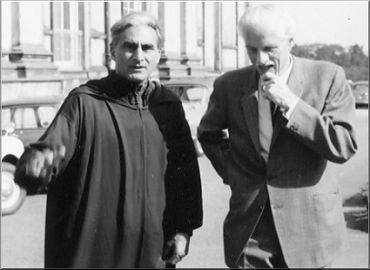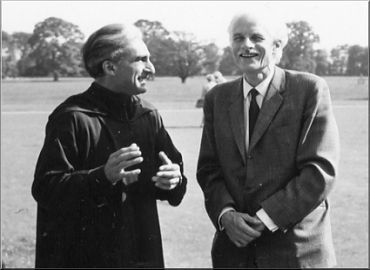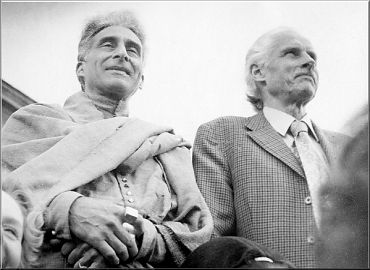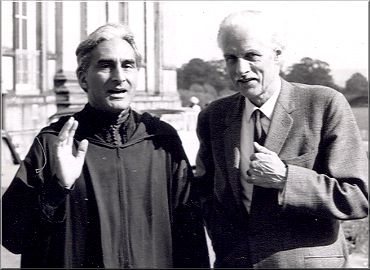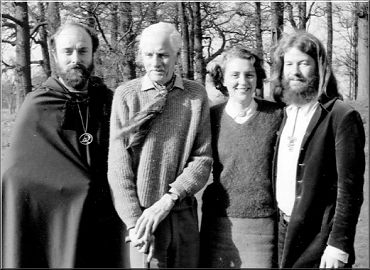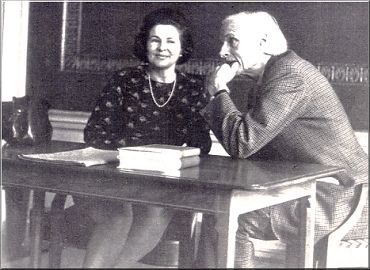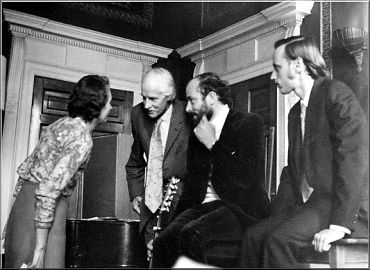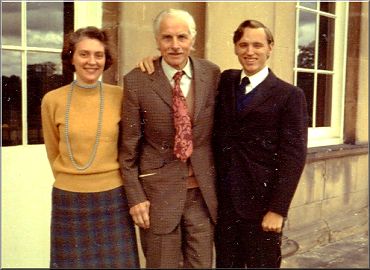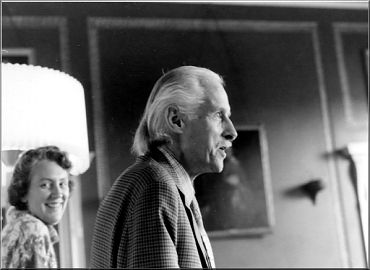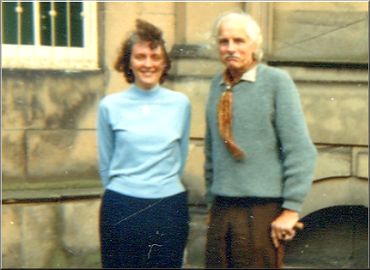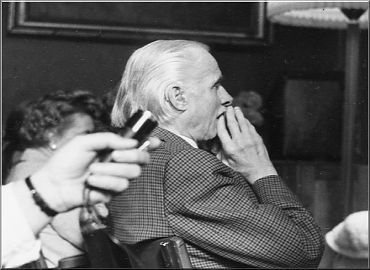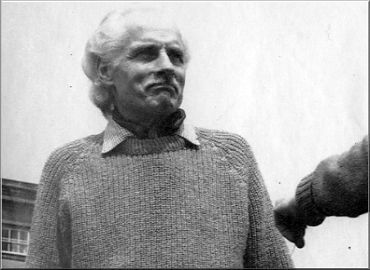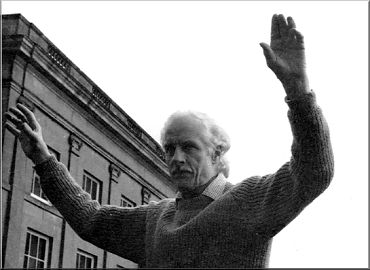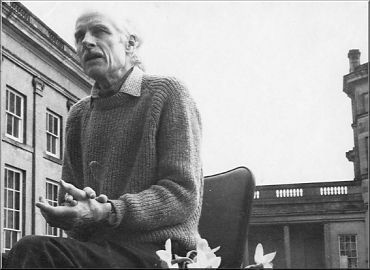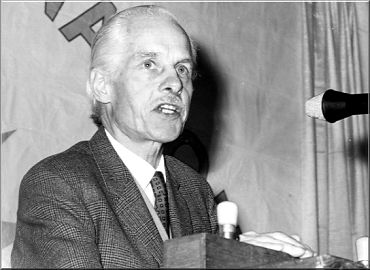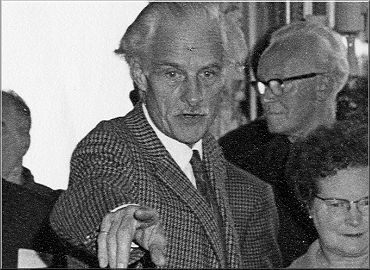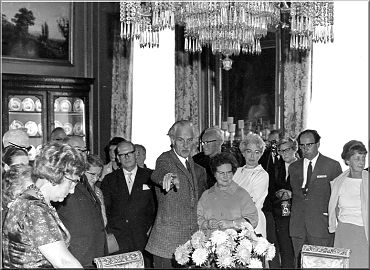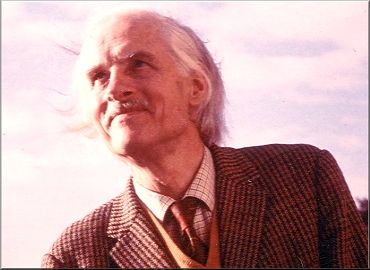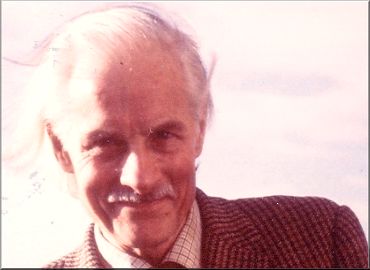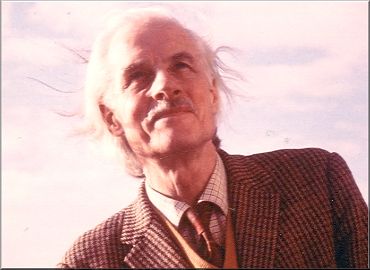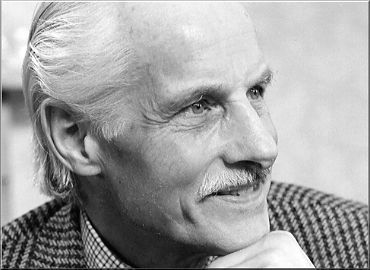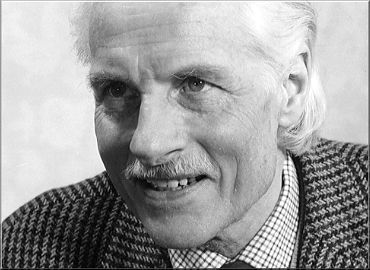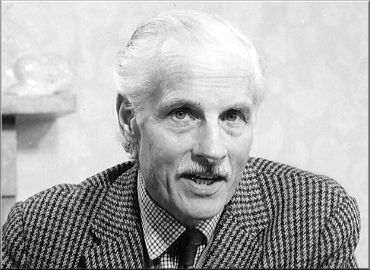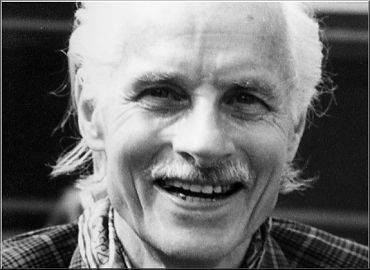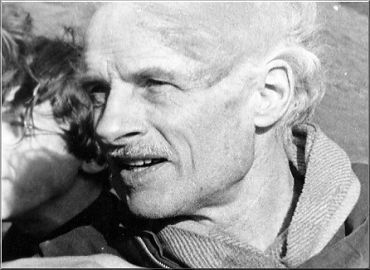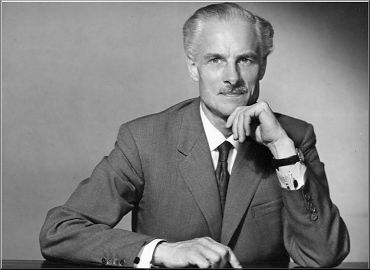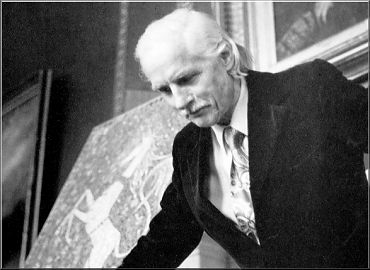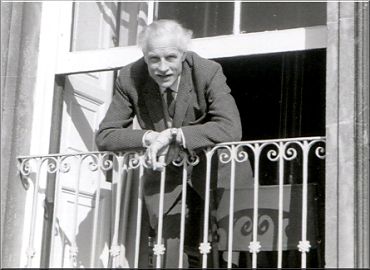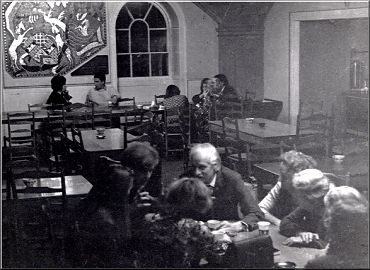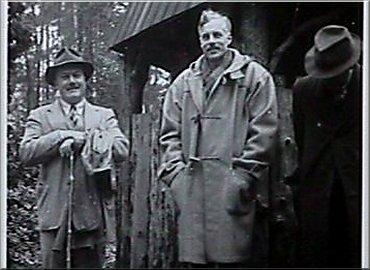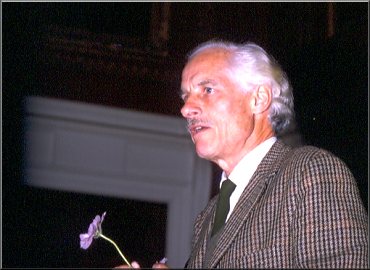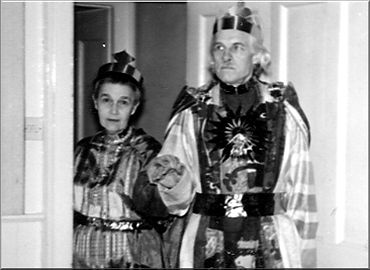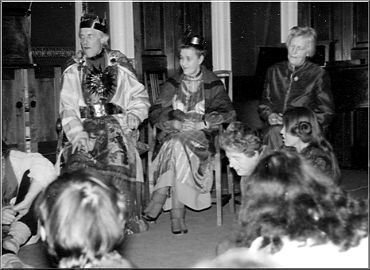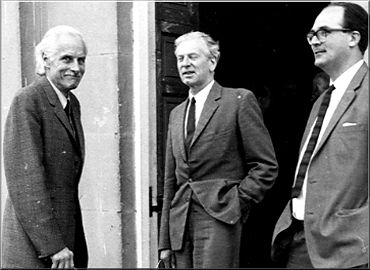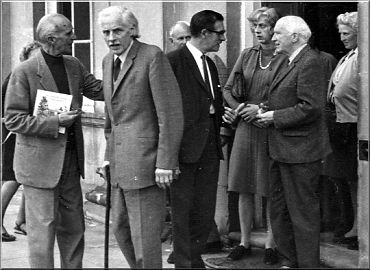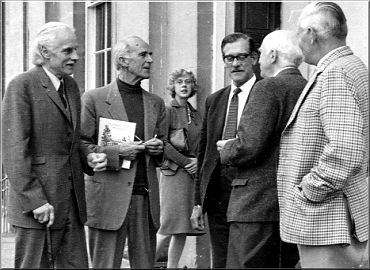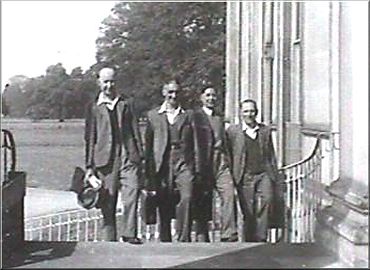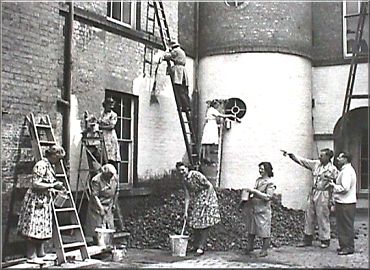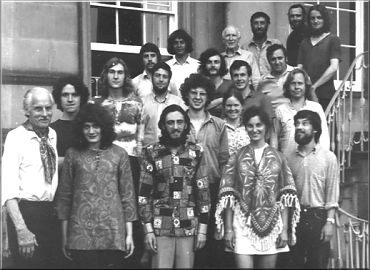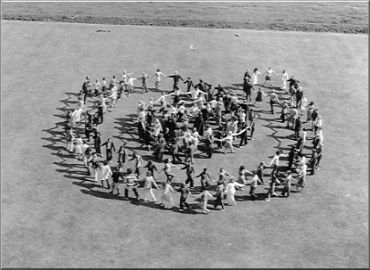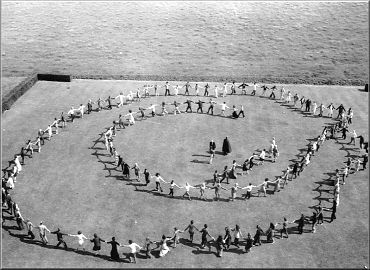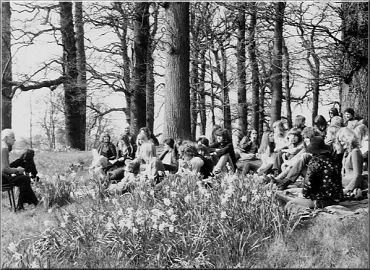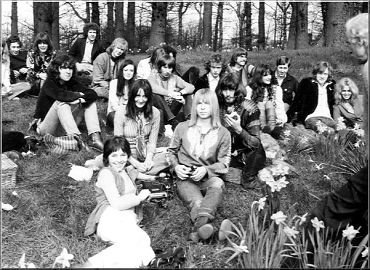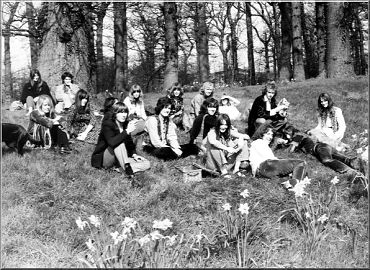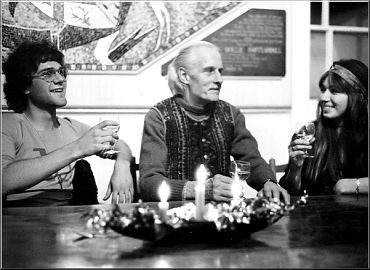Attingham Park (1948-1971)
- A Pioneering Adult Education College
ATTINGHAM PARK, Shropshire's Adult College, opened in 1948. It was a pioneering experiment representing something new in English life and education. Its success has been beyond all expectation.
Almost from the start it was quite clear that it responded to a real need. For there has been an increasing flow of students and there has been a continuous succession of courses, one group succeeding another to such an extent that for weeks on end there is not a free day, apart from the necessary times for turning round; and any organisation wanting to hold a conference at Attingham has to make a booking months ahead.
The College was set up under a Trust Deed and has its own governing body containing representatives of the Walker Trustees, Birmingham University and the Education Committee, together with co-opted members drawing on a wide range of experience.
GET TOGETHER SCHOOL
The founders of the College felt that there was a need for a place at which people with common interests from different parts of the county could meet together and carry on studies and activities of value to them in their leisure and work. Apart from the value of the studies themselves they thought it a good thing that Shropshire people from all parts and from all walks of life should have the chance of getting to know each other in the pursuit of common interests, and that in modern times such a college could make a particularly useful contribution in knitting society together and giving people a sense of unity.
7,000 ATTENDANCE IN A YEAR!
The success of the College is largely due to the inspiring leadership of its warden, Mr.G.L.Trevelyan and his devoted staff. Even in its short life of a little over 3 years it has become something of a landmark in adult education, with a national reputation. During the last 12 months 2,500 people have attended courses. Another 5,000 attended single lectures, conferences and concerts [Editor's note: during the whole of the time that Sir George was warden at the College (1948 - 1971), 1,033 courses were organised].
In launching their project the governors were fortunate to find a house of distinction in a convenient position. It is perhaps especially appropriate that in a new age one of the great houses of the county should have found a new purpose and should serve the people of Shropshire as a home for so many activities connected with their lives and work.
From the Shropshire Star or Shropshire Chronicle (written around 1952)
Courses Offered:
Notice the breadth and scope of courses offered 50 years ago...
Weekend Courses, New Year to Easter 1951
• Festivals of the Year and the Changing Seasons
• Trade Union Problems today and tomorrow
• Christian Philosophy
• The World Significance of Coalbrookdale
• Humus on the Farm - the case for organic manuring
• Costume, Music and Poetry through the Centuries • Orchestral Playing (II)
• Shakespeare and The Merchant of Venice
• Wochenende in Deutsche Sprache (German-speaking weekend)
• Local Studies Working Party
• Starting My Own Farm
• Celtic Christianity in the British Isles
• West and East (Britain, America & Russia)
• Art without Epoch (African children's art)
• Adventure on Holiday (II)
Spiritual Education:
Extracted from Sir George's 'Something of an Autobiography', and shortened.
At Attingham I was free to experiment with any themes for courses that would arouse enthusiasm and vision and sense of meaning to life. In an age when so many values were slithering, we needed to do all we could to restore sense of meaning. This seemed to me the real task of adult education. We were not so much concerned with current affairs, sociology and economics. These had been the major themes in the great days of the Workers' Educational Association.
Now our form of the new adult education was open to all classes and was clearly concerned to tap interests which added significance to our lives and gave the lead for development of the self through cultivating new skills and wider capacities. For me personally the spiritual world-view gave sense of meaning to life. Therefore from the first I began to experiment. In the very first programme I included a weekend called 'What can we believe?' in which we touched on spiritual knowledge. Warnings came to me that I must not risk criticism from rate-payers about what was happening at Attingham. Obviously I had to find ways of presenting these new ideas in a generally acceptable English idiom. I learned to be very diplomatic and play down these courses. The Extra-Mural Department expressed grave doubts as to whether they were valid for adult education!
Yet the governors had given me full freedom, so I continued my experiments in the fifties. At this time we knew little about a 'New Age Movement'. Yet by the early sixties I found that if I laid on a course on 'Frontiers of Reality' or 'The Quest for the Grail in our Time' or 'Spiritual Awakening', the house was packed. The news was getting around that here was a country house running spiritual courses, and people flooded in from all over the country. On one occasion the seventy beds were filled by return of post when our programme was sent out. Though my governors were doubtful about these courses, they at least brought in the funds! And to their credit, they never interfered or came to see what happened. And wonderful things did happen, but I learned to play my cards carefully.
The Sixties:
Sir George's vision was that adult education held the key to humanity equipping itself with the necessary qualities to enable people to change their relationships, both personal and international, to change the environment... to bring about a new era.
Through the 60s he was seeing ever more clearly that people must change their thinking, which should lead to an evolution in consciousness. He expected that the years around the turn of the century would be a time of crisis which should become a time of challenge and opportunity.
His teaching is therefore particularly relevant in the present world situation. He would see current tragedies as a wake-up-call, an opportunity to change our ideas and attitudes and our behaviour, to realise that we are all part of one global community.
George Trevelyan's great quality as a host was one of the many attributes that made him such a success with Attingham. His background and disposition fitted him superbly as the hospitable master of the house, concerned with the comfort and amusement of all his guests. Roger Orgill recalls the amazement on the faces of new students, walking from the bus stop up the long drive with their suitcases and overnight bags, at being greeted on the steps of the house by members of the household staff, and, once inside, by this charming aristocrat so obviously in his own setting. The actor in George Trevelyan also enjoyed putting on a more or less constant play. Another description might be orchestral conductor. He liked to be in charge, he liked to give the beat, he liked to have all sections of the household orchestra following his baton. Roger Orgill says that Attingham "became a spiritual home to many" and, perhaps surprisingly, "it was a long time before George saw that was happening."
The Attingham Zodiac
In the mid-1960s the art of mosaic-making was introduced as a collective artistic activity at Attingham. After several mosaics had been made, the process culminated in the creation of twelve zodiac mosaics. On the announcement of Sir George's retirement in 1971, an appeal went out to raise funds to mount them in the Round Entrance, which was converted into a Zodiac Room as a memorial to his wardenship. The appeal, and Sir George's thoughts on the mosaics, are reproduced below.
In response to the announcement of Sir George's retirement in the summer of 1971, we feel that many who have enjoyed Attingham courses would like to join in a gesture of appreciation for Sir George's 23 years as Warden. An opportunity for doing so is offered through the mounting of the mosaic panels of the Zodiac in the Round Entrance at Attingham.
The twelve panels, each 5' 3” x 2' 6”, were made by student groups in the past two years. The Zodiac Room is now completed and unveiled, and very fine it looks. It is undoubtedly the most important artistic contribution to Attingham made during Sir George's time as Warden.
The cost of mounting the panels, with architect's help, carpeting the room, lighting and setting the “stars” on the coved ceiling comes to about £900. The Governors of the College are unable to meet this charge as the College budget is fully committed. Sir George, who pressed ahead to complete this beautiful room, will have to stand the cost unless other support is forth coming.
We feel that many of our fellow students would like to join in raising a fund to present Attingham with this permanent token of Sir George's wardenship. It would certainly be the kind of leaving present he would most desire and the best appreciation we could show for all we have received during his term. Any sum collected in excess of these costs will be handed to Sir George as a personal retirement gift. We therefore invite you to make whatever contribution you feel able.
(Iris Ratsey, Ellie Beevers, Lawson & Sheila Stote, Guy Baker (1970))
The creation of the Zodiac Room is the biggest achievement in artistic and craft activity during my time at Attingham. In completing this room we have added a new and beautiful feature to the great house for which we have through the years gained such affection.
The Round Entrance (from now on called the Zodiac Room) is the under-vault supporting Nash's staircase. In early days we had gaily decorated the cove with the constellations in tinfoil and had painted the Signs of the Zodiac around the walls. Then came Jasper and Molly Kettlewell, stained glass makers, as tutors on craft courses. In 1966 they directed the first mosaic operation in making the great heraldic achievement in the College dining room. This was a remarkable example of group activity and showed the educational possibilities of mosaic as a craft for amateurs.
Then, full of ambition, we decided to make an Attingham Zodiac for the Round Entrance. The twelve mosaic panels were made by a team who attained great skill in their craft. Their names will be recorded on a plaque in the porch of the Zodiac Room. With help and advice from our architect friend, Alan Miller, we mounted the panels, redevised the starry heavens in more permanent form, invented a suitable lighting and carpeted the room.
It was declared open by Lady Berwick at a joyful gathering on November 7th, 1970. Thus Attingham, with all its beauty, has now received a further embellishment through student activity and zeal. Our thanks are due to the Kettlewells and all their team for their arduous work and sustained enthusiasm for this fine venture.
These are currently displayed at The Telford College of Art and Technology
Attingham Picture Archive
This archive is a collection of all the pictures we have from Attingham Park

